Electro-polarizable compound and capacitor
Lazarev , et al.
U.S. patent number 10,672,560 [Application Number 16/208,953] was granted by the patent office on 2020-06-02 for electro-polarizable compound and capacitor. This patent grant is currently assigned to CAPACITOR SCIENCES INCORPORATED. The grantee listed for this patent is Capacitor Sciences Incorporated. Invention is credited to Paul T. Furuta, Ian S.G. Kelly-Morgan, Pavel Ivan Lazarev, Yan Li, Barry K. Sharp.





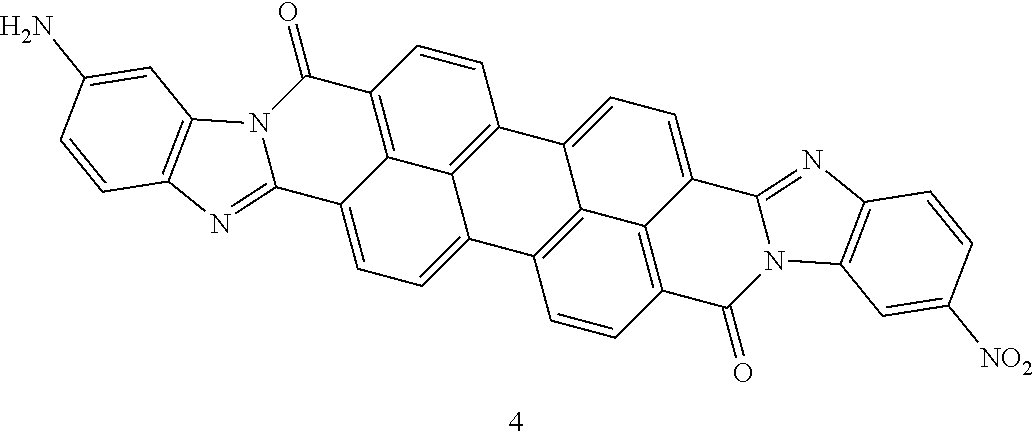


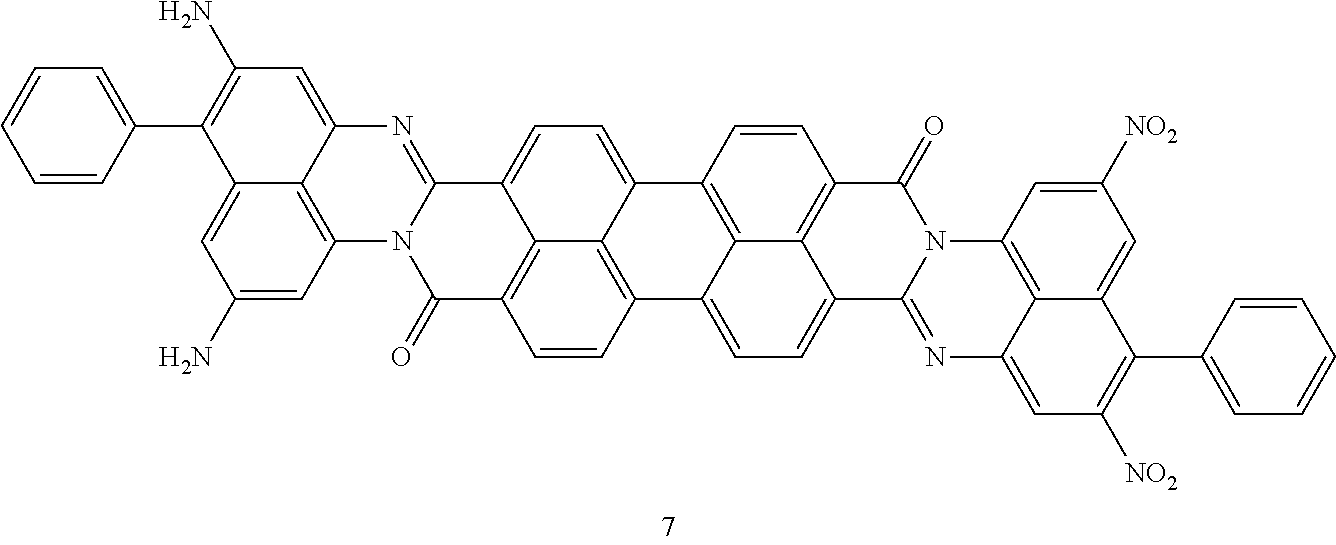



View All Diagrams
| United States Patent | 10,672,560 |
| Lazarev , et al. | June 2, 2020 |
Electro-polarizable compound and capacitor
Abstract
An electro-polarizable compound having the following formula (I): ##STR00001## where Core1 is an aromatic polycyclic conjugated molecule having two-dimensional flat form and self-assembling by pi-pi stacking in a column-like supramolecule comprising one or more rylene fragments, R1 is an electron donor group connected to Core1 and R1' is an electron acceptor group connected to the Core1, m is number of acceptor group R1, m' is a number of donor group R', m and m' are equal to 0, 1, 2, 3, 4, 5 or 6, wherein m and m' are not both equal to 0, R2 is a substituent comprising one or more ionic groups from a class of ionic compounds that form ionic liquids connected to the Core1-directly or via a connecting group, p is a number of ionic groups R2 which is equal to 0, 1, 2, 3 or 4; wherein the fragment marked NLE containing the Core1 with at least one group R1 and/or R1' has a nonlinear effect of polarization, wherein Core2 is an electro-conductive oligomer, n is a number equal to 0, 2, or 4, R3 is a substituent comprising one or more ionic groups from a class of ionic compounds that form ionic liquids connected to the Core2 directly or via a connecting group, s is a number of the ionic groups R3 which is equal to 0, 1, 2, 3 or 4; wherein R4 is a non-conjugate cyclic or polycyclic resistive substituent electrically insulating the column-like supramolecules from each other and connected to the aromatic polycyclic conjugated molecule (Core1) and/or to the Core2 directly or via a connecting group, k is a number of substituents R4 which is equal to 1, 2, 3, 4, 5, 6, 7 or 8.
| Inventors: | Lazarev; Pavel Ivan (Menlo Park, CA), Furuta; Paul T. (Sunnyvale, CA), Sharp; Barry K. (Redwood City, CA), Li; Yan (Fremont, CA), Kelly-Morgan; Ian S.G. (San Francisco, CA) | ||||||||||
|---|---|---|---|---|---|---|---|---|---|---|---|
| Applicant: |
|
||||||||||
| Assignee: | CAPACITOR SCIENCES INCORPORATED
(Menlo Park, CA) |
||||||||||
| Family ID: | 59961137 | ||||||||||
| Appl. No.: | 16/208,953 | ||||||||||
| Filed: | December 4, 2018 |
Prior Publication Data
| Document Identifier | Publication Date | |
|---|---|---|
| US 20190108944 A1 | Apr 11, 2019 | |
Related U.S. Patent Documents
| Application Number | Filing Date | Patent Number | Issue Date | ||
|---|---|---|---|---|---|
| 15163595 | May 24, 2016 | 10153087 | |||
| 15090509 | May 22, 2018 | 9978517 | |||
| Current U.S. Class: | 1/1 |
| Current CPC Class: | H01G 4/18 (20130101); H01G 4/32 (20130101); C09B 5/008 (20130101); C09B 5/62 (20130101); C07D 471/22 (20130101); H01G 4/14 (20130101); H01G 4/005 (20130101); C09B 57/08 (20130101) |
| Current International Class: | H01G 4/14 (20060101); H01G 4/32 (20060101); H01G 4/005 (20060101); C09B 57/08 (20060101); H01G 4/18 (20060101); C09B 5/62 (20060101); C07D 471/22 (20060101); C09B 5/00 (20060101) |
References Cited [Referenced By]
U.S. Patent Documents
| 3407394 | October 1968 | Hartke |
| 4549034 | October 1985 | Sato et al. |
| 4694377 | September 1987 | MacDougall et al. |
| 4702562 | October 1987 | Scheuble et al. |
| 4894186 | January 1990 | Gordon et al. |
| 5141837 | August 1992 | Nguyen et al. |
| 5187639 | February 1993 | Ogawa et al. |
| 5248774 | September 1993 | Dietz et al. |
| 5312896 | May 1994 | Bhardwaj et al. |
| 5384521 | January 1995 | Coe |
| 5395556 | March 1995 | Drost et al. |
| 5466807 | November 1995 | Dietz et al. |
| 5514799 | May 1996 | Varanasi et al. |
| 5581437 | December 1996 | Sebillotte et al. |
| 5583359 | December 1996 | Ng et al. |
| 5597661 | January 1997 | Takeuchi et al. |
| 5679763 | October 1997 | Jen et al. |
| 5742471 | April 1998 | Barbee et al. |
| 5840906 | November 1998 | Zoltewicz et al. |
| 5880951 | March 1999 | Inaba |
| 6025094 | February 2000 | Visco et al. |
| 6282081 | August 2001 | Takabayashi et al. |
| 6294593 | September 2001 | Jeng et al. |
| 6341056 | January 2002 | Allman et al. |
| 6391104 | May 2002 | Schulz |
| 6426861 | July 2002 | Munshi |
| 6501093 | December 2002 | Marks |
| 6519136 | February 2003 | Chu et al. |
| 6617830 | September 2003 | Nozu et al. |
| 6798642 | September 2004 | Decker et al. |
| 7025900 | April 2006 | Sidorenko et al. |
| 7033406 | April 2006 | Weir et al. |
| 7211824 | May 2007 | Lazarev |
| 7342755 | March 2008 | Horvat et al. |
| 7460352 | December 2008 | Jamison et al. |
| 7466536 | December 2008 | Weir et al. |
| 7498689 | March 2009 | Mitani et al. |
| 7579709 | August 2009 | Goetz et al. |
| 7625497 | December 2009 | Iverson et al. |
| 7750505 | July 2010 | Ichikawa |
| 7795431 | September 2010 | Pschirer et al. |
| 7808771 | October 2010 | Nguyen et al. |
| 7837902 | November 2010 | Hsu et al. |
| 7893265 | February 2011 | Facchetti et al. |
| 7910736 | March 2011 | Koenemann et al. |
| 7947199 | May 2011 | Wessling |
| 7990679 | August 2011 | Ehrenberg et al. |
| 8143853 | March 2012 | Jestin et al. |
| 8222074 | July 2012 | Lazarev |
| 8231809 | July 2012 | Pschirer et al. |
| 8236998 | August 2012 | Nagata et al. |
| 8344142 | January 2013 | Marder et al. |
| 8372527 | February 2013 | Morishita et al. |
| 8404844 | March 2013 | Kastler et al. |
| 8527126 | September 2013 | Yamamoto et al. |
| 8552179 | October 2013 | Lazarev |
| 8766566 | July 2014 | Baba et al. |
| 8818601 | August 2014 | G V et al. |
| 8831805 | September 2014 | Izumi et al. |
| 8895118 | November 2014 | Geivandov et al. |
| 8929054 | January 2015 | Felten et al. |
| 8938160 | January 2015 | Wang |
| 9056676 | June 2015 | Wang |
| 9293260 | March 2016 | Schmid et al. |
| 9589727 | March 2017 | Lazarev |
| 9899150 | February 2018 | Lazarev |
| 9916931 | March 2018 | Lazarev |
| 9978517 | May 2018 | Lazarev et al. |
| 10153087 | December 2018 | Lazarev |
| 2002/0027220 | March 2002 | Wang et al. |
| 2002/0048140 | April 2002 | Gallay et al. |
| 2003/0026063 | February 2003 | Munshi |
| 2003/0102502 | June 2003 | Togashi |
| 2003/0103319 | June 2003 | Kumar et al. |
| 2003/0105365 | June 2003 | Smith et al. |
| 2003/0142461 | July 2003 | Decker et al. |
| 2003/0160595 | August 2003 | Provanzana et al. |
| 2003/0219647 | November 2003 | Wariishi |
| 2004/0173873 | September 2004 | Kumar et al. |
| 2004/0222413 | November 2004 | Hsu et al. |
| 2004/0223291 | November 2004 | Naito et al. |
| 2005/0118083 | June 2005 | Tabuchi |
| 2006/0120014 | June 2006 | Nakamura et al. |
| 2006/0120020 | June 2006 | Dowgiallo |
| 2007/0001258 | January 2007 | Aihara |
| 2007/0108940 | May 2007 | Sainomoto et al. |
| 2007/0159767 | July 2007 | Jamison et al. |
| 2007/0181973 | August 2007 | Hung et al. |
| 2008/0002329 | January 2008 | Pohm et al. |
| 2008/0017850 | January 2008 | Koenemann et al. |
| 2008/0150484 | June 2008 | Kimball et al. |
| 2008/0266750 | October 2008 | Wu et al. |
| 2008/0283283 | November 2008 | Abe et al. |
| 2008/0283826 | November 2008 | Zheng et al. |
| 2009/0040685 | February 2009 | Hiemer et al. |
| 2009/0184355 | July 2009 | Brederlow et al. |
| 2010/0038629 | February 2010 | Lazarev |
| 2010/0085521 | April 2010 | Kasianova et al. |
| 2010/0172066 | July 2010 | Baer et al. |
| 2010/0173134 | July 2010 | Khokhlov et al. |
| 2010/0178728 | July 2010 | Zheng et al. |
| 2010/0183919 | July 2010 | Holme et al. |
| 2010/0193777 | August 2010 | Takahashi et al. |
| 2010/0214719 | August 2010 | Kim et al. |
| 2010/0233491 | September 2010 | Nokel et al. |
| 2010/0255381 | October 2010 | Holme et al. |
| 2010/0269731 | October 2010 | Jespersen et al. |
| 2010/0309606 | December 2010 | Allers et al. |
| 2010/0309696 | December 2010 | Guillot et al. |
| 2010/0315043 | December 2010 | Chau |
| 2011/0006393 | January 2011 | Cui |
| 2011/0042649 | February 2011 | Duvall et al. |
| 2011/0079733 | April 2011 | Langhals et al. |
| 2011/0079773 | April 2011 | Wasielewski et al. |
| 2011/0110015 | May 2011 | Zhang et al. |
| 2011/0228442 | September 2011 | Zhang et al. |
| 2012/0008251 | January 2012 | Yu et al. |
| 2012/0033342 | February 2012 | Ito et al. |
| 2012/0053288 | March 2012 | Morishita et al. |
| 2012/0056600 | March 2012 | Nevin |
| 2012/0059307 | March 2012 | Harris et al. |
| 2012/0113380 | May 2012 | Geivandov et al. |
| 2012/0122274 | May 2012 | Lazarev et al. |
| 2012/0244330 | September 2012 | Sun et al. |
| 2012/0268862 | October 2012 | Song et al. |
| 2012/0274145 | November 2012 | Taddeo |
| 2012/0302489 | November 2012 | Rodrigues et al. |
| 2013/0056720 | March 2013 | Kim et al. |
| 2013/0187475 | July 2013 | Vendik et al. |
| 2013/0194716 | August 2013 | Holme et al. |
| 2013/0215535 | August 2013 | Bellomo |
| 2013/0224473 | August 2013 | Tassell et al. |
| 2013/0314839 | November 2013 | Terashima et al. |
| 2013/0342967 | December 2013 | Lai et al. |
| 2014/0035100 | February 2014 | Cho |
| 2014/0036410 | February 2014 | Okamatsu et al. |
| 2014/0098458 | April 2014 | Almadhoun et al. |
| 2014/0158340 | June 2014 | Dixler et al. |
| 2014/0169104 | June 2014 | Kan et al. |
| 2014/0185260 | July 2014 | Chen et al. |
| 2014/0268490 | September 2014 | Tsai et al. |
| 2014/0316387 | October 2014 | Harris et al. |
| 2014/0347787 | November 2014 | Fathi et al. |
| 2015/0008671 | January 2015 | Rentero et al. |
| 2015/0008735 | January 2015 | Mizoguchi |
| 2015/0158392 | June 2015 | Zhao |
| 2015/0162131 | June 2015 | Felten et al. |
| 2015/0249401 | September 2015 | Eriksen et al. |
| 2015/0302990 | October 2015 | Ghosh et al. |
| 2016/0001662 | January 2016 | Miller et al. |
| 2016/0020026 | January 2016 | Lazarev |
| 2016/0020027 | January 2016 | Lazarev |
| 2016/0254092 | September 2016 | Lazarev et al. |
| 2016/0314901 | October 2016 | Lazarev |
| 2016/0340368 | November 2016 | Lazarev |
| 2016/0379757 | December 2016 | Robinson et al. |
| 2017/0117097 | April 2017 | Furuta et al. |
| 2017/0133167 | May 2017 | Keller et al. |
| 2017/0232853 | August 2017 | Lazarev et al. |
| 2017/0233528 | August 2017 | Sharp et al. |
| 2017/0236641 | August 2017 | Furuta et al. |
| 2017/0236642 | August 2017 | Furuta et al. |
| 2017/0236648 | August 2017 | Lazarev et al. |
| 2017/0237271 | August 2017 | Kelly-Morgan et al. |
| 2017/0237274 | August 2017 | Lazarev et al. |
| 2017/0287637 | October 2017 | Lazarev et al. |
| 2017/0287638 | October 2017 | Lazarev et al. |
| 2017/0301467 | October 2017 | Lazarev et al. |
| 2018/0033554 | February 2018 | Li et al. |
| 2018/0061582 | March 2018 | Furuta et al. |
| 2018/0122143 | May 2018 | Ellwood |
| 2018/0126857 | May 2018 | Kelly-Morgan |
| 2018/0137978 | May 2018 | Hein et al. |
| 2018/0137984 | May 2018 | Furuta et al. |
| 2018/0158616 | June 2018 | Lazarev et al. |
| 2074848 | Feb 1998 | CA | |||
| 1582506 | Feb 2005 | CN | |||
| 100449661 | Jan 2009 | CN | |||
| 1748271 | Jun 2010 | CN | |||
| 102426918 | Apr 2012 | CN | |||
| 103261370 | Aug 2013 | CN | |||
| 203118781 | Aug 2013 | CN | |||
| 203377785 | Jan 2014 | CN | |||
| 103755703 | Apr 2014 | CN | |||
| 103986224 | Aug 2014 | CN | |||
| 103258656 | Aug 2015 | CN | |||
| 10203918 | Aug 2003 | DE | |||
| 102010012949 | Sep 2011 | DE | |||
| 102011101304 | Nov 2012 | DE | |||
| 102012016438 | Feb 2014 | DE | |||
| 0443566 | Aug 1991 | EP | |||
| 0493716 | Jul 1992 | EP | |||
| 0585999 | Mar 1994 | EP | |||
| 0602654 | Jun 1994 | EP | |||
| 0729056 | Aug 1996 | EP | |||
| 0791849 | Aug 1997 | EP | |||
| 0986080 | Jan 2004 | EP | |||
| 0865142 | May 2008 | EP | |||
| 2062944 | May 2009 | EP | |||
| 2108673 | Oct 2009 | EP | |||
| 2415543 | Feb 2012 | EP | |||
| 1486590 | Dec 2013 | EP | |||
| 2759480 | Jul 2014 | EP | |||
| 1990682 | Jan 2015 | EP | |||
| 547853 | Sep 1942 | GB | |||
| 923148 | Apr 1963 | GB | |||
| 2084585 | Nov 1983 | GB | |||
| S6386731 | Apr 1988 | JP | |||
| H03253014 | Nov 1991 | JP | |||
| 2786298 | Aug 1998 | JP | |||
| 2000100484 | Apr 2000 | JP | |||
| 2001093778 | Apr 2001 | JP | |||
| 2007287829 | Nov 2007 | JP | |||
| 2010106225 | May 2010 | JP | |||
| 2010160989 | Jul 2010 | JP | |||
| 2011029442 | Feb 2011 | JP | |||
| 2014139296 | Jul 2014 | JP | |||
| 2199450 | Feb 2003 | RU | |||
| 2512880 | Apr 2014 | RU | |||
| 1990009616 | Aug 1990 | WO | |||
| 0139305 | May 2001 | WO | |||
| 2002026774 | Apr 2002 | WO | |||
| 2007078916 | Jul 2007 | WO | |||
| 2008038047 | Apr 2008 | WO | |||
| 2009101449 | Aug 2009 | WO | |||
| 2009144205 | Dec 2009 | WO | |||
| 2009158553 | Dec 2009 | WO | |||
| 2011056903 | May 2011 | WO | |||
| 2011137137 | Nov 2011 | WO | |||
| 2012012672 | Jan 2012 | WO | |||
| 2012084536 | Jun 2012 | WO | |||
| 2012122312 | Sep 2012 | WO | |||
| 2012142460 | Oct 2012 | WO | |||
| 2012162500 | Nov 2012 | WO | |||
| 2013009772 | Jan 2013 | WO | |||
| 2013085467 | Jun 2013 | WO | |||
| 2014009686 | Jan 2014 | WO | |||
| 2015003725 | Jan 2015 | WO | |||
| 2015175522 | Nov 2015 | WO | |||
| 2015175558 | Nov 2015 | WO | |||
Other References
|
Final Office Action for U.S. Appl. No. 14/919,337 dated May 1, (Year: 2017). cited by examiner . International Search Report and Written Opinion for International Application No. PCT/US2017/016862, dated Aug. 14, 2017. cited by applicant . International Search Report and Written Opinion for International Application No. PCT/US2017/017146, dated May 11, 2017. cited by applicant . International Search Report and Written Opinion for International Application No. PCT/US2017/017150, dated May 18, 2017. cited by applicant . International Search Report and Written Opinion for International Application No. PCT/US2017/24150, dated Jun. 21, 2017. cited by applicant . International Search Report and Written Opinion for International Application No. PCT/US2017/24371, dated Aug. 2, 2017. cited by applicant . International Search Report and Written Opinion for International Application No. PCT/US2017/24600, dated Aug. 14, 2017. cited by applicant . International Search Report and Written Opinion dated Feb. 23, 2018 for International Patent Application No. PCT/US17/64252. cited by applicant . International Search Report and Written Opinion dated Feb. 25, 2016 for International Application No. PCT/US15/58890, to Pavel Ivan Lazarev, filed Nov. 3, 2015. cited by applicant . International Search Report and Written Opinion dated Jul. 12, 2016 for International Application No. PCT/US2016/019641, to Pavel Ivan Lazarev, filed Feb. 25, 2016. cited by applicant . International Search Report and Written Opinion dated Jun. 7, 2017 for International Application No. PCT/US2017/24589, to Pavel Ivan Lazarev, filed Jun. 7, 2017. cited by applicant . International Search Report and Written Opinion dated Oct. 20, 2016 International Application No. PCT/US2016/039395, to Matthew R. Robinson, et al., filed Jun. 24, 2016. cited by applicant . International Search Report and Written Opinion dated Sep. 1, 2016 for International Application No. PCT/US2016/033628, to Pavel Ivan Lazarev, filed Sep. 1, 2016. cited by applicant . International Union of Pure and Applied Chemistry Polymer Divison Stejskal et al., "Polyaniline: Thin Films and Colloidal Dispersions (IUPAC Technical Report)", vol. 77, No. 5, pp. 815-826, Russian Academy of Sciences, St. Petersburg 199004, Russia; 2005. cited by applicant . Isoda, Kyosuke et al. "Truxene-Based Columnar Liquid Crystals: Self-Assembled Structures and Electro-Active Properties." Chemistry--An Asian Journal (2009), vol. 4, No. 10, pp. 1619-1625. cited by applicant . JACS Articles, Kang et. al., "Ultralarge Hyperpolarizability Twisted .pi.-Electron System Electra-Optic Chromophores: Synthesis, Solid-State and Solution-Phase Structural Characteristics, Electronic Structures, Linear and Nonlinear Optical Properties, and Computational Studies", pp. 3267-3286; Perugia, Italy Feb. 20, 2007. cited by applicant . Jaroslav Stejskal and Irina Sapurina, "Polyaniline: Thin Films and Colloidal Dispersions (IUPAC Technical Report)", Pure and Applied Chemistry, vol. 77, No. 5, pp. 815-826 (2005). cited by applicant . Johnson, Kieth E. "What's an Ionic Liquid?" The Electrochemical Society Interface, Published Spring 2007, pp. 38-41, Accessed Aug. 28, 2017. cited by applicant . Kontrakt Technology Limited, Alla Sakharova, PhD., "Cryscade Solar Limited: Intellectual Property Portfolio summary", pp. 1-3, Cryscade Solar Limited; Apr. 9, 2015. cited by applicant . Li, Li-Li et al. "Synthesis and Mesomorphism of Ether-ester Mixed Tail C3-symmetrical Truxene discotic liquid crystals." Liquid Crystals(2010), vol. 37, No. 5, pp. 499-506. cited by applicant . Liang, Mao et al. "Synthesis and Photovoltaic Performance of Two Triarylamine Organic Dyes Based on Truxene." Yinyong Huaxue (2011) vol. 28 No. 12, pp. 1387-1392. cited by applicant . Lu, Meng et al. "Organic Dyes Incorporating Bis-hexapropyltruxeneamino Moiety for efficient Dye-sensitized Solar Cells." Journal of Physical Chemistry C (2011) vol. 115, No. 1, pp. 274-281. cited by applicant . M. Jurow et al, "Porphyrins as molectular electronic components of functional devices", Coordination Chemistry Reviews, Elsevier Science, Amsterdam NL, vol. 254, No. 19-20, Oct. 1, 2010, pp. 2297-2310. cited by applicant . Maddalena, Francesco "Why are Ionic Liquids, Liquids?" http://www.quora.com/why-are-ionic-liquids-liquids?, Published Jan. 26, 2017, Accessed Aug. 28, 2017. cited by applicant . Manukian, BK. 216. IR.-spektroskopische Untersuchungen in der Imidazol-Reihe. Helvetica Chimica Acta. 1965, vol. 48, p. 2001. cited by applicant . Microelectronics Research and Communications Institute, Founders et al., "High-Voltage Switching Circuit for Nanometer Scale CMOS Technologies", pp. 1-4, University of Idaho, Moscow, ID 83843 USA, Apr. 30, 2007. cited by applicant . Molecular Diversity Preservation International, Barber, et al. "Polymer Composite and Nanocomposite Dielectric Materials for Pulse Power Energy Storage" pp. 1-32; 29 University of South Carolina, Columbia, SC 29208 Oct. 2009. cited by applicant . Nagabrahmandachari et al. "Synthesis and Spectral Analysis of Tin Tetracarboxylates and Phosphinates" Indian Journal of Chemistry--Section A, 1995, vol. 34A, pp. 658-660. cited by applicant . Non-Final Action for U.S. Appl. No. 15/043,186, dated Feb. 14, 2018. cited by applicant . Non-Final Office Action dated Jun. 13, 2017 for U.S. Appl. No. 15/163,595. cited by applicant . Non-Final Office Action for U.S. Appl. No. 14/719,072, dated Aug. 2, 2017. cited by applicant . Non-Final Office Action for U.S. Appl. No. 15/043,247, dated Jun. 22, 2017. cited by applicant . Non-Final Office Action for U.S. Appl. No. 15/043,247, dated Jun. 7, 2018. cited by applicant . Non-Final Office Action for U.S. Appl. No. 15/043,315, dated Dec. 26, 2017. cited by applicant . Non-Final Office Action for U.S. Appl. No. 15/053,943, dated Apr. 19, 2017. cited by applicant . Non-Final Office Action for U.S. Appl. No. 15/090,509, dated Jun. 22, 2017. cited by applicant . Non-Final Office Action for U.S. Appl. No. 15/163,595, dated Jan. 17, 2018. cited by applicant . Non-Final Office Action for U.S. Appl. No. 15/194,224, dated Sep. 27, 2017. cited by applicant . Non-Final Office Action for U.S. Appl. No. 15/430,339, dated Jul. 11, 2018. cited by applicant . Non-Final Office Action for U.S. Appl. No. 15/430,307, dated Jul. 16, 2018. cited by applicant . Non-Final Office Action for U.S. Appl. No. 15/449,587, dated May 21, 2018. cited by applicant . Non-Final Office Action for U.S. Appl. No. 15/710,587, dated Jul. 3, 2018. cited by applicant . Non-Final Office Action for U.S. Appl. No. 15/782,752, dated Sep. 21, 2018. cited by applicant . Non-Final Office Action for U.S. Appl. No. 15/801,240, dated Oct. 19, 2018. cited by applicant . Non-Final Office Action for U.S. Appl. No. 15/805,016, dated Jun. 4, 2018. cited by applicant . Non-Final Office Action for U.S. Appl. No. 15/805,016, dated Month Day, Year. cited by applicant . Non-Final Office Action for U.S. Appl. No. 14/710,480, dated May 8, 2017. cited by applicant . Non-Final Office Action for U.S. Appl. No. 14/752,600, dated Jan. 23, 2017. cited by applicant . U.S. Appl. No. 62/121,328, to Pavel Ivan Lazarev et al., filed Feb. 26, 2015. cited by applicant . U.S. Appl. No. 62/294,949, to Pavel Ivan Lazarev, et al., filed Feb. 12, 2016. cited by applicant . U.S. Appl. No. 62/294,955, to Pavel Ivan Lazarev, et al., filed Feb. 12, 2016. cited by applicant . U.S. Appl. No. 62/294,964, to Pavel Ivan Lazarev, et al., filed Feb. 12, 2016. cited by applicant . U.S. Appl. No. 62/318,134, to Pavel Ivan Lazarev, et al., filed Mar. 4, 2016. cited by applicant . Updated Notice of Allowance for U.S. Appl. No. 14/710,480, dated Jan. 17, 2018. cited by applicant . Warmerdam, T. W. et al. "Discotic Liquid Crystals. Physical Parameters of some 2, 3, 7, 8, 12, 13-hexa(alkanoyloxy) truxenes: Observation of a Reentrant Isotropic Phase in a Pure Disk-like mesogen." Liquid Crystals (1988), vol. 3, No. 8, pp. 1087-1104. cited by applicant . Yue Wang, et. al., "Morphological and Dimensional Control via Hierarchical Assembly of Doped Oligoaniline Single Crystals", J. Am. Chem. Soc. 2012, 134, pp. 9251-9262. cited by applicant . Non-Final Office Action for U.S. Appl. No. 14/919,337, dated Jan. 4, 2017. cited by applicant . Non-Final Office Action for U.S. Appl. No. 15/043,186, dated Jun. 2, 2017. cited by applicant . Non-Final/Final Office Action for U.S. Appl. No. 15/043,247, dated Feb. 20, 2018. cited by applicant . Non-Final/Final Office Action for U.S. Appl. No. 15/430,391, dated Jul. 20, 2018. cited by applicant . Notice of Allowance for U.S. Appl. No. 14/710,480, dated Nov. 24, 2017. cited by applicant . Notice of Allowance for U.S. Appl. No. 14/710,480, dated Jan. 11, 2018. cited by applicant . Notice of Allowance for U.S. Appl. No. 14/710,480, dated Oct. 6, 2017. cited by applicant . Notice of Allowance for U.S. Appl. No. 14/710,491, dated Oct. 24, 2016. cited by applicant . Notice of Allowance for U.S. Appl. No. 14/719,072, dated Nov. 16, 2017. cited by applicant . Notice of Allowance for U.S. Appl. No. 14/752,600, dated Nov. 24, 2017. cited by applicant . Notice of Allowance for U.S. Appl. No. 14/752,600, dated Dec. 4, 2017. cited by applicant . Notice of Allowance for U.S. Appl. No. 14/752,600, dated Jul. 27, 2017. cited by applicant . Notice of Allowance for U.S. Appl. No. 14/919,337, dated Jul. 19, 2017. cited by applicant . Notice of Allowance for U.S. Appl. No. 14/919,337, dated Mar. 5, 2018. cited by applicant . Notice of Allowance for U.S. Appl. No. 14/919,337, dated Nov. 8, 2017. cited by applicant . Notice of Allowance for U.S. Appl. No. 14/931,757, dated Dec. 29, 2017. cited by applicant . Notice of Allowance for U.S. Appl. No. 14/931,757, dated Feb. 8, 2018. cited by applicant . Notice of Allowance for U.S. Appl. No. 14/931,757, dated Jul. 17, 2017. cited by applicant . Notice of Allowance for U.S. Appl. No. 14/931,757, dated Oct. 31, 2017. cited by applicant . Notice of Allowance for U.S. Appl. No. 15/053,943, dated Aug. 14, 2017. cited by applicant . Notice of Allowance for U.S. Appl. No. 15/090,509, dated Jan. 24, 2018. cited by applicant . Notice of Allowance for U.S. Appl. No. 15/163,595, dated Jul. 30, 2018. cited by applicant . Office Action dated May 18, 2018 for Chinese Patent Application for Invention No. 20158005110. cited by applicant . Office Action dated Dec. 13, 2017 for Taiwan Patent Application No. 106104499. cited by applicant . Office Action dated Dec. 13, 2017 for Taiwan Patent Application No. 106104500. cited by applicant . Office Action dated Jan. 25, 2018 for Chinese patent application No. 20158005146.4. cited by applicant . Office Action dated Oct. 19, 2017 for Taiwan patent Application No. 106104501. cited by applicant . Optical Society of America, Kuzyk et al, "Theory of Molecular Nonlinear Optics", pp. 5, 4-82, Department of Physics and Astronomy, Washington State University, Pullman, Washington 99164-2814, USA, Mar. 26, 2013. cited by applicant . Philosophical Transactions of the Royal Society, SIMON, "Charge storage mechanism in nanoporous carbons and its consequence for electrical double layer capacitors" pp. 3457-3467; Drexel University, Philadelphia, PA 19104, 2010. cited by applicant . PUBCHEM Open Chemistry Database, Compound Summary for CID 91001799. Mar. 17, 2015. pp. 1-10. cited by applicant . R. J. Baker and B. P. Johnson, "stacking power MOSFETs for use in high speed instrumentation", Department of Electrical Engineering, University of Nevada, Reno, Reno. Nevada 89557-0030; pp. 5799-5801 Aug. 3, 1992. cited by applicant . Roger D. Hartman and Herbert A. Pohl, "Hyper-electronic Polarization in Macromolecular Solids", Journal of Polymer Science: Part A-1, vol. 6, pp. 1135-1152 (1968). cited by applicant . RSC Publishing, Akl et al., "Molecular materials for switchable nonlinear optics in the solid state, based on ruthenium-nitrosyl complexes", pp. 3518-3527, Porto Alegre, Brazil; May 24, 2013. cited by applicant . Search Report and Written Opinion dated Feb. 7, 2018 for Singapore Patent Application No. 11201609435W. cited by applicant . Taiwan Office Action for TW Application No. 106104501, dated Oct. 19, 2017. cited by applicant . Taiwanese Office Action for 886103 Application No. 106142206, dated Jul. 5, 2018. cited by applicant . Trevethan, Thomas et al. "Organic Molecules Reconstruct Nanostructures on Ionic Surfaces." Small (2011), vol. 7, No. 9, pp. 1264-1270. cited by applicant . U.S. Appl. No. 14/719,072, to Pavel Ivan Lazarev, filed May 21, 2015. cited by applicant . U.S. Appl. No. 14/752,600, to Matthew R. Robinson, et al., filed Jun. 26, 2015. cited by applicant . U.S. Appl. No. 14/919,337, to Paul T. Furuta, et al., filed Oct. 21, 2015. cited by applicant . U.S. Appl. No. 14/931,757, to Pavel Ivan Lazarev, et al., filed Nov. 3, 2015. cited by applicant . U.S. Appl. No. 15/043,186, to Paul T. Furuta, et al., filed Feb. 12, 2016. cited by applicant . U.S. Appl. No. 15/043,209, to Paul T. Furuta, et al., filed Feb. 12, 2016. cited by applicant . U.S. Appl. No. 15/043,247, to Barry K Sharp, et al., filed Feb. 12, 2016. cited by applicant . U.S. Appl. No. 15/043,315, to Ian S.G. Kelly-Morgan, filed Feb. 12, 2014. cited by applicant . U.S. Appl. No. 15/043,315, to Ivan S.G. Kelley-Morgan, filed Feb. 12, 2016. cited by applicant . U.S. Appl. No. 15/053,943, to Pavel Ivan Lazarev, et al., filed Mar. 14, 2016. cited by applicant . U.S. Appl. No. 15/090,509, to Pavel Ivan Lazarev, et al., filed Mar. 4, 2016. cited by applicant . Caitlin S. Sample et al., Modular synthesis of asymmetric rylene derivatives\, Journal of Material Chemistry C, Jan. 19, 2017, 1052-1056, 5 (5), Royal Society of Chemistry, London U.K. cited by applicant . Center for Dielectric Studies, Janosik, et al., "Ultra-High Energy Density Capacitors Through Improved Glass Technology", pp. 1-5 Center for Dielectric Studies Penn State University, dated 2004. cited by applicant . Chao-Hsien Ho et al., "High dielectric constant polyaniline/poly(acrylic acid) composites prepared by in situ polymerization", Synthetic Metals, vol. 158, pp. 630-637 (2008). cited by applicant . Congressional Research Service, Paul W. Parfomak, "Energy Storage for Power Grids and Electric Transportation: A Technology Assessment", pp. 87-94; Members and Committees of Congress; Mar. 27, 2012. cited by applicant . Co-Pending U.S. Appl. No. 15/194,224, to Lazarev et al., filed Jun. 27, 2016. cited by applicant . Co-Pending U.S. Appl. No. 15/368,171, to Lazarev et al., filed Dec. 2, 2016. cited by applicant . Co-Pending U.S. Appl. No. 15/430,307, to Lazarev et al, filed Feb. 10, 2017. cited by applicant . Co-Pending U.S. Appl. No. 15/449,587, to Lazarev et al., filed Mar. 3, 2017. cited by applicant . Co-Pending U.S. Appl. No. 15/675,614, to Kelly-Morgan, filed Aug. 11, 2017. cited by applicant . Co-Pending U.S. Appl. No. 15/710,587, to Li et al, filed Sep. 20, 2017. cited by applicant . Co-Pending U.S. Appl. No. 15/469,126, to Lazarev et al, filed Mar. 24, 2017. cited by applicant . D C Tiwari, et al: "Temperature dependent studies of electric and dielectric properties of polythiophene based nano composite", Indian Journal of Pure & Applied Physicsvol. 50, Jan. 2012. pp. 49-56. cited by applicant . Deily, Dielectric and Optical Characterization of Polar Polymeric Materials: Chromophore Entrained PMMA Thin Films, Thesis, 2008. cited by applicant . Department of Chemistry and Biochemistry, Hardy, et al. "Converting an Electrical Insulator into a Dielectric Capacitor: End-Capping Polystyrene with Oligoaniline"; pp. 799-807, Rensselaer Polytechnic Institute, Troy, New York 12180; Feb. 17, 2013. cited by applicant . Department of Chemistry, Ho et al., "High dielectric constant polyanilinelpoly(acrylic acid) composites prepared by in situ polymerization", pp. 630-637; National Taiwan University, Taipei, Taiwan, ROC, Apr. 15, 2008. cited by applicant . Deruiter, J. Resonance and Induction Tutorial. Auburn University--Principles of Drug Action 1 Course Material. Spring 2005, 19 pages. cited by applicant . Extended European Search Report . 15792494.5, dated Dec. 11, 2017. cited by applicant . Extended European Search Report dated Aug. 8, 2018 for European Patent Application No. 16756391.5. cited by applicant . Extended European Search Report dated Sep. 24, 2018 for European Patent Application No. 15856609.1. cited by applicant . Extended European Search Report dated Sep. 26, 2018 for European Patent Application No. 16797411.2. cited by applicant . Extended European Search Report for Application No. 15792405.1, dated Nov. 10, 2017. cited by applicant . Final Office Action dated Feb. 14, 2018 for U.S. Appl. No. 15/043,186. cited by applicant . Final Office Action for U.S. Appl. No. 15/043,247, dated Oct. 24, 2018. cited by applicant . Final Office Action for U.S. Appl. No. 15/043,247, dated Oct. 4, 2017. cited by applicant . Final Office Action for U.S. Appl. No. 15/043,249, dated Feb. 6, 2018. cited by applicant . Final Office Action for U.S. Appl. No. 15/043,315, dated Jun. 7, 2018. cited by applicant . Final Office Action for U.S. Appl. No. 15/194,224, dated Jan. 30, 2018. cited by applicant . Final Office Action for U.S. Appl. No. 15/449,587, dated Oct. 10, 2018. cited by applicant . Final Office Action for U.S. Appl. No. 15/710,587, dated Nov. 6, 2018. cited by applicant . Final Office Action for U.S. Appl. No. 14/919,337, dated May 1, 2017. cited by applicant . Handy, Scott T. "Ionic Liquids--Classes and Properties" Published Sep. 2011, Accessed Aug. 28, 2017, InTechweb.org. cited by applicant . Henna Ruuska et al., "A Density Functional Study on Dielectric Properties of Acrylic Acid Crafted Polypropylene", The Journal of Chemical Physics, vol. 134, p. 134904 (2011). cited by applicant . Hindawi Publishing Corporation, Chavez-Castillo et al, "Third-Order Nonlinear Optical Behavior of Novel Polythiophene Derivatives Functionalized with Disperse Red 19 Chromophore", pp. 1-11, International Journal of Polymer Science vol. 2015, Article ID 219361, Mar. 12, 2015. cited by applicant . Hindawi Publishing Corporation, Gonzalez-Espasandin et al., "Fuel Cells: A Real Option for Unmanned Aerial Vehicles Propulsion", pp. 1-13, Torrej'on de Ardoz, 28850 Madrid, Spain Jan. 30, 2014. cited by applicant . Hindawi Publishing Corporation, Khalil Ahmed et al., "High dielectric constant polyaniline/poly(acrylic acid) composites prepared by in situ polymerization", pp. 630-637, University of the Punjab, New Campus, Lahore 54590, Oct. 17, 2015. cited by applicant . Hsing-Yang Tsai et al, "1,6- and 1,7-Regioisomers of Asymmetric and Symmetric Perylene Bisimides: Synthesis, Characterization and Optical Properties" Molecules, 2014, vol. 19, pp. 327-341. cited by applicant . Hsing-Yang Tsai et al, "Synthesis and optical properties of novel asymmetric perylene bisimides", Journal of Luminescence, Vole 149, pp. 103-111 (2014). cited by applicant . Institute of Transportation Studies, Burke, et al. "Review of the Present and Future Applications of Supercapacitors in Electric and Hybrid Vehicles", pp. 2-23 UC Davis ITS; Dec. 2014. cited by applicant . International Application No. PCT/US/15/58890, to Pavel Ivan Lazarev, et al., filed Nov. 3, 2015. cited by applicant . International Search Report and Written Opinion dated Jul. 31, 2017 for International Patent Application PCT/US2017/024589. cited by applicant . International Search Report and Written Opinion for International Application No. PCT/US2015/030356, dated Jul. 28, 2015. cited by applicant . International Search Report and Written Opinion for International Application No. PCT/US2015/030415, dated Nov. 4, 2015. cited by applicant . International Search Report and Written Opinion for International Application No. PCT/US2015/058890, dated Feb. 25, 2016. cited by applicant . International Search Report and Written Opinion for International Application No. PCT/US2016/019641, dated Jul. 12, 2016. cited by applicant . International Search Report and Written Opinion for International Application No. PCT/US2016/033628, dated Sep. 1, 2016. cited by applicant . International Search Report and Written Opinion for International Application No. PCT/US2016/039395, dated Oct. 20, 2016. cited by applicant . International Search Report and Written Opinion for International Application No. PCT/US2016/039395, dated Jul. 1, 2016. cited by applicant . International Search Report and Written Opinion for International Application No. PCT/US2016/57765, dated Jan. 5, 2017. cited by applicant . Ni, Hai-Lang et al., "Truxene Discotic Liquid Crystals with Two Different Ring Substituents: Synthesis, Metamorphosis and High Charged Carrier Mobility", Liquid Crystals, vol. 40, No. 3, pp. 411-420, Jan. 4, 2013. cited by applicant . Supplementary European Search Report issued in corresponding European patent application No. 17779545 dated Dec. 5, 2019. cited by applicant. |
Primary Examiner: Davis; Zinna Northington
Attorney, Agent or Firm: BCF LLP
Parent Case Text
CLAIM OF PRIORITY
This application is a division of U.S. patent application Ser. No. 15/163,595, filed May 24, 2016, the entire contents of which are incorporated herein by reference. U.S. patent application Ser. No. 15/163,595 is a continuation-in-part of U.S. patent application Ser. No. 15/090,509 filed Apr. 4, 2016 (now U.S. Pat. No. 9,978,517), the entire contents of which are incorporated herein by reference.
Claims
What is claimed is:
1. An electro-polarizable compound having the following formula (I): ##STR00067## wherein the Core1 is selected from the following structures: ##STR00068## ##STR00069## R1 is an electron donor group connected to Core1 and R1' is an electron acceptor group connected to the Core1, m is number of acceptor group R1, m' is a number of donor group R', m and m' are equal to 0, 1, 2, 3, 4, 5 or 6, wherein m and m' are not both equal to 0, R2 is a substituent comprising one or more ionic groups from a class of ionic compounds that form ionic liquids connected to the Core1 directly or via a connecting group, p is a number of ionic groups R2 which is equal to 0, 1, 2, 3 or 4; wherein the fragment marked NLE containing the Core1 with at least one group R1 and/or R1' has a nonlinear effect of polarization, wherein Core2 is an electro-conductive oligomer, n is a number equal to 0, 2, or 4, R3 is a substituent comprising one or more ionic groups from a class of ionic compounds that form ionic liquids connected to the Core2 directly or via a connecting group, s is a number of the ionic groups R3 which is equal to 0, 1, 2, 3 or 4; wherein R4 is a non-conjugate cyclic or polycyclic resistive substituent electrically insulating the column-like supramolecules from each other and connected to the aromatic polycyclic conjugated molecule (Core1) and/or to the Core2 directly or via a connecting group, k is a number of substituents R4 which is equal to 1, 2, 3, 4, 5, 6, 7 or 8.
2. The electro-polarizable compound according to claim 1, wherein the acceptor groups (R1') are selected from --NO.sub.2, --NH.sub.3.sup.+, --NR.sub.3.sup.+, Cl.sup.-, Br.sup.-, --CHO, --CRO, --SO.sub.3H, --SO.sub.3R, --SO.sub.2NH.sub.2, --COOH, --COOR, --COCl, --CONH.sub.2, --CF.sub.3, --CCl.sub.3, --CN, and --C(CN).sub.2, wherein R is selected from alkyl, allyl, benzyl groups, phenyl, and aryl groups.
3. The electro-polarizable compound according to claim 1, wherein the donor groups (R1) are selected from --O--, --NH.sub.2, --NHR, --NR.sub.2, --OH, --OR, --NHCOR, --OCOR, alkyls, --C.sub.6H.sub.5, and vinyls, wherein R is radical selected from alkyl, allyl, benzyl groups, phenyl, and aryl groups.
4. The electro-polarizable compound according to claim 1, wherein the at least one connecting group is a structure selected from structures: 13-22, where X is hydrogen (H) or an alkyl group: ##STR00070##
5. The electro-polarizable compound according to claim 1, wherein the at least one connecting group is selected from CH.sub.2, CF.sub.2, SiR.sub.2O, and CH.sub.2CH.sub.2O, wherein R is selected from H, alkyl, and fluorine.
6. The electro-polarizable compound according to claim 1, wherein the at least one connecting group is a structure selected from structures 24 to 29: ##STR00071##
7. The electro-polarizable compound according to claim 1, wherein the resistive substituent R4 is selected from unsubstituted alkyl, unsubstituted aryl, substituted alkyl, substituted aryl, fluorinated alkyl, chlorinated alkyl, branched alkyl, branched fluorinated alkyl, branched chlorinated alkyl groups, and any combination thereof.
8. The electro-polarizable compound of claim 1, wherein the Core1 and the groups R1 and R1' form a non-centrosymmetric molecular structure.
9. The electro-polarizable compound of claim 1, wherein the Core1 the groups R1 and R1' and the resistive substituents (R4) form a non-centrosymmetric molecular structure.
10. The electro-polarizable compound of claim 1 having the following formula (II): ##STR00072## wherein the resistive substituents R4 are a non-conjugated part of compound II, and are either monocycles or fused polycycles, wherein the monocycles or polycycles are either saturated hydrocarbons or saturated halocarbons forming rigid spatial structures with dense packing of SP3 carbon saturated with H, F, Cl, and/or Br, and wherein k is a number of substituents R4 which is equal to 0, 1, 2, 3, 4, 5, 6, 7 or 8 and parameters n=p=s=0.
11. The electro-polarizable compound of claim 10, wherein a length of the non-conjugated part of the electro-polarizable compound is selected such that the resistivity of the electro-polarizable compound is greater than 1018 ohm cm.
12. The electro-polarizable compound of claim 10, wherein a length of the non-conjugated part of the electro-polarizable compound is selected such that the resistivity of the electro-polarizable compound is between 1018 ohmcm and 1024 ohmcm.
13. The electro-polarizable compound of claim 10, wherein the resistive substituent R4 is a polycyclic alkyl group and a polycyclic halo-alkyl group, wherein in the polycyclic halo-alkyl group is connected to the apex of Core1 on which the R1 is connected, or the apex of Core1 on which R1' is connected, but not both.
14. The electro-polarizable compound of claim 10, wherein the resistive substituent R4 is a resistive polycyclic substituent selected from C.sub.25H.sub.34, C.sub.25H.sub.35, C.sub.25F.sub.34 and C.sub.25F.sub.35 and located on the apex phenyl, naphthyl, or anthryl rings of Core1.
15. The electro-polarizable compound of claim 10 having the following formula (III): ##STR00073## wherein R1' is an acceptor group, and R1 is a donor group.
16. The electro-polarizable compound according to claim 15, wherein the set of the electron donor and acceptor groups consists of two donor groups --NH.sub.2 and two acceptor groups --NO.sub.2, wherein m is equal to 4, located on rylene rings, or on apex phenyl, naphthyl, and/or anthryl ring positions of the Core1, or on both rylene rings positions and apex phenyl, naphthyl, and/or anthryl ring positions; wherein the resistive substituent (R4) is an amine structure having a formula of the type: ##STR00074## wherein the resistive substituents R4 are connected the Core 1 via a connecting group.
17. The electro-polarizable compound of claim 10 having a formula (V): ##STR00075## wherein the Core1 is the aromatic polycyclic conjugated molecule, R1 is a donor group, and R1' is acceptor group.
18. A solution comprising an organic solvent and at least one type of electro-polarizable compound according to claim 1.
19. The solution according to claim 18, comprising a mixture of different electro-polarizable compounds.
20. The solution according to claim 18, wherein the mixture of the electro-polarizable compounds comprises rylene fragments of different length.
21. The solution according to claim 18, wherein the organic solvent is selected from ketones, carboxylic acids, hydrocarbons, cyclic hydrocarbons, chlorohydrocarbons, alcohols, ethers, esters, and any combination thereof.
22. The solution according to claim 18, wherein the organic solvent is selected from acetone, xylene, toluene, ethanol, methylcyclohexane, ethyl acetate, diethyl ether, octane, chloroform, methylene chloride, dichloroethane, trichloroethene, tetrachloroethene, carbon tetrachloride, 1,4-dioxane, tetrahydrofuran, pyridine, triethylamine, nitromethane, acetonitrile, dimethylformamide, dimethyl sulfoxide, and any combination thereof.
23. A metadielectric layer comprising the electro-polarizable compounds according to claim 1, wherein the nonlinearly polarizable fragments comprising an aromatic polycyclic conjugated molecule with one or more R1 groups, and wherein the one or more R1 and/or R1' groups form a resistive envelope and solubilize the organic compound in a solvent and electrically insulating the column-like supramolecules from each other.
24. The metadielectric layer according to claim 23, wherein the column-like supramolecules are formed by the electro-polarizable compounds comprising rylene fragments of different length.
25. The metadielectric layer according to claim 23, wherein the metadielectric layer's relative permittivity is greater than or equal to 1000.
26. The metadielectric layer according to claim 23, wherein the layer's resistivity is greater than or equal to 1013 ohm/cm.
27. A meta-capacitor comprising two metal electrodes positioned parallel to each other and which can be rolled or flat and planar with said metadielectric layer between said electrodes, wherein the metadielectric layer comprises the electro-polarizable compounds according to claim 1 wherein the nonlinearly polarizable fragments comprising an aromatic polycyclic conjugated molecule with at least one group R1 or R1', the electro-conductive oligomers and the ionic groups which have electronic and/or ionic type of polarizability are placed into a resistive dielectric envelope formed by resistive substituents R1 and/or R1' providing solubility of the organic compound in a solvent and electrically insulating the column-like supramolecules from each other.
Description
FIELD OF THE INVENTION
The present disclosure relates generally to passive components of electrical circuit and more particularly to an electro-polarizable compound and capacitor based on this material and intended for energy storage.
BACKGROUND
A capacitor is a passive electronic component that is used to store energy in the form of an electrostatic field, and comprises a pair of electrodes separated by a dielectric layer. When a potential difference exists between the two electrodes, an electric field is present in the dielectric layer. An ideal capacitor is characterized by a single constant value of capacitance, which is a ratio of the electric charge on each electrode to the potential difference between them. For high voltage applications, much larger capacitors have to be used.
One important characteristic of a dielectric material is its breakdown field. The breakdown field corresponds to the value of electric field strength at which the material suffers a catastrophic failure and conducts electricity between the electrodes. For most capacitor geometries, the electric field in the dielectric can be approximated by the voltage between the two electrodes divided by the spacing between the electrodes, which is usually the thickness of the dielectric layer. Since the thickness is usually constant it is more common to refer to a breakdown voltage, rather than a breakdown field. There are a number of factors that can dramatically reduce the breakdown voltage. In particular, the geometry of the conductive electrodes is important factor affecting breakdown voltage for capacitor applications. In particular, sharp edges or points hugely increase the electric field strength locally and can lead to a local breakdown. Once a local breakdown starts at any point, the breakdown will quickly "trace" through the dielectric layer until it reaches the opposite electrode and causes a short circuit.
Breakdown of the dielectric layer usually occurs as follows. Intensity of an electric field becomes high enough to "pull" electrons from atoms of the dielectric material and makes them conduct an electric current from one electrode to another. Presence of impurities in the dielectric or imperfections of the crystal structure can result in an avalanche breakdown as observed in semiconductor devices.
Another important characteristic of a dielectric material is its dielectric permittivity. Different types of dielectric materials are used for capacitors and include ceramics, polymer film, paper, and electrolytic capacitors of different kinds. The most widely used polymer film materials are polypropylene and polyester. Increasing dielectric permittivity allows for increasing volumetric energy density, which makes it an important technical task.
Second-order nonlinear optical (NLO) effects of organic molecules have been extensively investigated for their advantages over inorganic crystals. Properties studied, for example, include their large optical non-linearity, ultra-fast response speed, high damage thresholds and low absorption loss, etc. Particularly, organic thin films with excellent optical properties have tremendous potential in integrated optics such as optical switching, data manipulation and information processing. Among organic NLO molecules, azo-dye chromophores have been a special interest to many investigators because of their relatively large molecular hyper-polarizability (b) due to delocalization of the p-electronic clouds. They were most frequently either incorporated as a guest in the polymeric matrix (guest-host polymers) or grafted into the polymeric matrix (functionalized polymers) over the past decade.
Hyper-electronic polarization of organic compounds is described in greater detail in Roger D. Hartman and Herbert A. Pohl, "Hyper-electronic Polarization in Macromolecular Solids", Journal of Polymer Science: Part A-1 Vol. 6, pp. 1135-1152 (1968). Hyper-electronic polarization may be viewed as the electrical polarization external fields due to the pliant interaction with the charge pairs of excitons, in which the charges are molecularly separated and range over molecularly limited domains. In this article four polyacene quinone radical polymers were investigated. These polymers at 100 Hz had dielectric constants of 1800-2400, decreasing to about 58-100 at 100,000 Hz. Essential drawback of the described method of production of material is use of a high pressure (up to 20 kbars) for forming the samples intended for measurement of dielectric constants.
SUMMARY
The present disclosure provides an electro-polarizable compound having the following general formula (I):
##STR00002##
Core1 is an aromatic polycyclic conjugated molecule having two-dimensional flat form and self-assembling by pi-pi stacking in a column-like supramolecule, R1 are electron donor groups connected to the aromatic polycyclic conjugated molecule (Core1) and R1' are electron acceptor groups connected to the aromatic polycyclic conjugated molecule (Core1), m is number of acceptor groups R1, m' is a number of donor groups R', m and m' are equal to 0, 1, 2, 3, 4, 5 or 6, wherein m and m' are not both equal to 0, R2 is a substituent comprising one or more ionic groups from a class of ionic compounds that are used in ionic liquids connected to the aromatic polycyclic conjugated molecule (Core1) directly or via a connecting group, p is number of ionic groups R2 which is equal to 0, 1, 2, 3 or 4. The fragment marked NLE containing the Core1 with at least one group R1 and/or R1' has a nonlinear effect of polarization.
Core2 is an electro-conductive oligomer and number n of the electro-conductive oligomers is equal to 0, 2, or 4. R3 is a substituent comprising one or more ionic groups from a class of ionic compounds that are used in ionic liquids connected to the electro-conductive oligomer (Core2) directly or via a connecting group, s is number of the ionic groups R3 which is equal to 0, 1, 2, 3 or 4.
R4 is a resistive substituent providing solubility of the organic compound in a solvent and electrically insulating the column-like supramolecules from each other and connected to the aromatic polycyclic conjugated molecule (Core1) and/or to the electro-conductive oligomer (Core2) directly or via a connecting group. The parameter k is a number of substituents R4, which is equal to 0, 1, 2, 3, 4, 5, 6, 7 or 8.
In one aspect, the present disclosure provides a solution comprising an organic solvent and at least one disclosed electro-polarizable compound.
In another aspect, the present disclosure provides a crystal metadielectric layer comprising a mixture of the electro-polarizable compounds as disclosed above. The nonlinearly polarizable fragments comprising an aromatic polycyclic conjugated molecule with at least one group R1 are placed into the resistive dielectric envelope formed by resistive substituents R4 providing solubility of the organic compound in a solvent and electrically insulating the column-like supramolecules from each other.
In still another aspect, the present invention provides a meta-capacitor comprising two metal electrodes positioned parallel to each other and which can be rolled or flat and planar with said metadielectric layer between said electrodes, wherein the metadielectric layer comprises one or more types of the disclosed electro-polarizable. The nonlinearly polarizable fragments comprising an aromatic polycyclic conjugated molecule with at least one group R1, the electro-conductive oligomers and the ionic groups which have electronic and/or ionic type of polarizability are placed into the resistive dielectric envelope formed by resistive substituents providing solubility of the organic compound in a solvent and electrically insulating the column-like supramolecules from each other.
INCORPORATION BY REFERENCE
All publications, patents, and patent applications mentioned in this specification are herein incorporated by reference to the same extent as if each individual publication, patent, or patent application was specifically and individually indicated to be incorporated by reference.
BRIEF DESCRIPTION OF THE DRAWING
FIG. 1A schematically shows a capacitor with flat and planar electrodes in accordance with an aspect of the present disclosure.
FIG. 1B schematically shows a capacitor with rolled (circular) electrodes in accordance with another aspect of the present disclosure.
DETAILED DESCRIPTION
While various embodiments of the invention have been shown and described herein, it will be obvious to those skilled in the art that such embodiments are provided by way of example only. Numerous variations, changes, and substitutions may occur to those skilled in the art without departing from the invention. It should be understood that various alternatives to the embodiments of the invention described herein may be employed.
The present disclosure provides an electro-polarizable compound. Existence of the electrophilic groups (acceptors) and the nucleophilic groups (donors) in the aromatic polycyclic conjugated molecule (Core1) promotes non-uniform distribution of electronic density in the conjugated molecule: surplus of electrons in one place (in a donor zone) and a shortage of electrons in other place (in an acceptor zone). The influence of external electric field onto non-uniform distribution of electronic density along the conjugated molecule leads to the induced polarization P.sub.ind. In the general case the induced polarization is nonlinear function of intensity of local electric field E.sub.loc. In the assumption of weak nonlinearity when it is possible to be limited to several members of decomposition of an induced polarization into a series on degrees of intensity of a local electric field, the induced polarization of the environment (of molecule) can be written down in the following form: P.sub.ind=.alpha.E.sub.loc+.beta.E.sub.loc.sup.2+ . . . , where .alpha.-linear polarizability, .beta.-square polarizability. Though the assumption of a smallness of electric field is not always right, nevertheless parameters .alpha. and .beta. can be used for qualitative analysis of polarizability of the disclosed compounds. In the present disclosure the main attention is paid to ways of increase in the induced polarization of the disclosed compounds and therefore onto ways of increase of the linear polarizability .alpha. and square polarizability .beta.. Such attention is caused by that the constant dipole and quadrupole electrical moments are mutually neutralized at self-assembly of such conjugated molecules. Analysis shows that linear polarizability depends on the size of the average electronic density in the molecule, and nonlinear polarizability depends on the size of heterogeneity of electronic density. It is also shown that a non-centrosymmetric arrangement of the electron donor and acceptor groups can lead to a strong nonlinear response of the compound's electronic polarization in the presence of an electric field. Influence of chemical structure on linear polarizability .alpha. and square polarizability .beta. is shown in Table 1 below.
TABLE-US-00001 TABLE 1 chemical structure .alpha. .beta. ##STR00003## 945 0.041 ##STR00004## 1348 0.165 ##STR00005## 1537 862 ##STR00006## 1252 21107 ##STR00007## 1908 40221 ##STR00008## 1431 35189 ##STR00009## 2057 168081 ##STR00010## 3397 582843 ##STR00011## 4604 1002570
An essential feature of the present disclosure is use of rigid no-conjugated limit carbon structures as resistive substituents. Such structures are absolutely determined in distinguishing from the dielectric structures formed by "fat" tails (such as alkyl, aryl, substituted alkyl, substituted aryl, fluorinated alkyl, chlorinated alkyl, branched and complex alkyl) which can be bent (curved) and lead to stochastic distribution of electronic density in the dielectric structure that leads to its electric breakdown. Thus, as resistive substituent R4 is used a non-conjugated compound, such as cyclo-hydrocarbons with rigid/fixed spatial structure like cyclohexane, cyclopentane and flat structures that are built as tiles from cyclo-molecules that do not contain voids/empty space; that have dense packing of SP3 carbon with H and F substitutes. Otherwise use of fat tails leads to formation of friable dielectric structure (film, layer, and envelope). It is possible that in friable structure always there will be a local area ("hole") in which electronic density is equal to zero and which can be occupied with a free electron (that leads to electric breakdown). It is possible to enter a concept of a molecular hole when one molecule "is taken out" from the ordered structure (from a crystal lattice). In this case the quantum object (a quantum hole, a quantum point) is formed in which there are empty (non-occupied) energy levels. Set of such objects creates a condition for conductivity of electrons and for electric breakdown of dielectric structure. Therefore in the present disclosure the determined structures forming the ordered crystal dielectric layers are disclosed which do not allow electrons to pass through material.
Presence of the electro-conductive oligomers leads to increasing of polarizability of the disclosed electro-polarizable compound because of electronic super conductivity of the electro-conductive oligomers. Ionic groups increase an ionic component of polarization of the disclosed electro-polarizable compound. The nonlinearly polarizable fragments comprising an aromatic polycyclic conjugated molecule with at least one dopant group, the electro-conductive oligomers and the ionic groups are placed into the resistive dielectric envelope formed by resistive substituents providing solubility of the organic compound in a solvent and electrically insulating the column-like supramolecules from each other. The resistive substituents increase the electric strength of these electro-polarizable compounds and breakdown voltage of the dielectric layers made on their basis.
In one embodiment of the present disclosure, the aromatic polycyclic conjugated molecule (Core1) comprises rylene fragments, which may be in conjugation with phenyl amides, naphthalene amides, and/or anthracene amides. In another embodiment of the disclosed electro-polarizable compound, the rylene fragments are selected from structures from 1 to 12 as given in Table 2.
TABLE-US-00002 TABLE 2 Examples of the aromatic polycyclic conjugated molecule comprising rylene fragments ##STR00012## 1 ##STR00013## 2 ##STR00014## 3 ##STR00015## 4 ##STR00016## 5 ##STR00017## 6 ##STR00018## 7 ##STR00019## 8 ##STR00020## 9 ##STR00021## 10 ##STR00022## 11 ##STR00023## 12
In one embodiment of the present disclosure, the electron donor and acceptor groups (R1) are selected from nucleophilic groups (donors) and electrophilic groups (acceptors) and the set (variety) of groups (R1).sub.m containing of m elements comprises donors (R1') and/or acceptors (R1). The electrophilic groups (acceptors) are selected from --NO.sub.2, --NH.sub.3+ and --NR.sub.3+(quaternary nitrogen salts), counterion Cl-- or Br--, --CHO (aldehyde), --CRO (keto group), --SO.sub.3H (sulfonic acids), --SO.sub.3R (sulfonates), --SO.sub.2NH.sub.2 (sulfonamides), --COOH (carboxylic acid), --COOR (esters, from carboxylic acid side), --COCl (carboxylic acid chlorides), --CONH.sub.2 (amides, from carboxylic acid side), --CF.sub.3, --CCl.sub.3, --CN, --C(CN).sub.2 wherein R is radical selected from the list comprising alkyl (methyl, ethyl, iso-propyl, tert-butyl, neopentyl, cyclohexyl etc.), allyl (--CH.sub.2--CH.dbd.CH.sub.2), benzyl (--CH.sub.2C.sub.6H.sub.5) groups, phenyl (+substituted phenyl) and other aryl (aromatic) groups. The nucleophilic groups (donors) are selected from --O-- (phenoxides, like --ONa or --OK), --NH.sub.2, --NHR, --NR.sub.2, --OH, --OR (ethers), --NHCOR (amides, from amine side), --OCOR (esters, from alcohol side), alkyls, --C.sub.6H.sub.5, vinyls, wherein R is radical selected from the list comprising alkyl (methyl, ethyl, isopropyl, tert-butyl, neopentyl, cyclohexyl etc.), allyl (--CH.sub.2--CH.dbd.CH.sub.2), benzyl (--CH.sub.2C.sub.6H.sub.5) groups, phenyl (+substituted phenyl) and other aryl (aromatic) groups.
In still another embodiment of the disclosed electro-polarizable compound, at least one connecting group is selected from the list comprising the following structures: 13-23 given in Table 3, where X is hydrogen (H) or an alkyl group.
TABLE-US-00003 TABLE 3 Examples of the connecting group ##STR00024## 13 ##STR00025## 14 ##STR00026## 15 ##STR00027## 16 ##STR00028## 17 ##STR00029## 19 ##STR00030## 20 ##STR00031## 21 ##STR00032## 22
In one embodiment of the present disclosure, the at least one connecting group is selected from the group of CH.sub.2, CF.sub.2, SiR.sub.2O, CH.sub.2CH.sub.2O, wherein R is selected from the list comprising H, alkyl, and fluorine. In another embodiment of the present disclosure, the at least one connecting group is selected from structures 24 to 29 as given in Table 4.
TABLE-US-00004 TABLE 4 Examples of the connecting group ##STR00033## 24 ##STR00034## 25 ##STR00035## 26 ##STR00036## 27 ##STR00037## 28 ##STR00038## 29
In yet another embodiment of the present disclosure, the resistive substituent R4 is selected from the group of alkyl, aryl, substituted alkyl, substituted aryl, fluorinated alkyl, chlorinated alkyl, branched and complex alkyl, branched and complex fluorinated alkyl, branched and complex chlorinated alkyl groups, and any combination thereof, and wherein the alkyl group is selected from methyl, ethyl, propyl, n-butyl, iso-butyl and tert-butyl groups, and the aryl group is selected from phenyl, benzyl and naphthyl groups or siloxane, and/or polyethyleneglycol as linear or branched chains. In still another embodiment of the present disclosure, the resistive substituent R4 is C.sub.XQ.sub.2X+1, where X.gtoreq.1 and Q is hydrogen (H), fluorine (F), or chlorine (Cl).
In one embodiment of the electro-polarizable compound, the aromatic polycyclic conjugated molecule (Core1) and the groups (R1) form a non-centrosymmetric molecular structure. In another embodiment of the electro-polarizable compound, the aromatic polycyclic conjugated molecule (Core1), the groups (R1) and the resistive substituents (R4) form a non-centrosymmetric molecular structure.
In one embodiment of the present disclosure, the electro-polarizable compound has the following general formula (II):
##STR00039## In general formula II, Core1 is the aromatic polycyclic conjugated molecule, as discussed above, the resistive substituent R4 is a non-conjugated part of disclosed compound, which may be saturated and fused cyclo-hydrocarbons or saturated and fused cyclo-halocarbons with rigid spatial structure including, but not limited to cyclohexane, cyclopentane, polycyclic perflourohexyls, polycyclic perflouropentyls, and structures that are built from tiles of cyclic carbon molecules. Wherein, the tiles of cyclic carbon molecules have dense packing of SP3 carbon saturated with H, F, Cl, Br. And, wherein parameters n=p=s=0. In another embodiment of the electro-polarizable compound, a length of the non-conjugated part is selected such that its resistivity is greater than 10.sup.18 ohmcm. In yet another embodiment of the electro-polarizable compound, the resistive substituent R4 is a polycyclic alkyl group and a polycyclic halo-alkyl, wherein in the polycyclic halo-alkyl group is connected to the apex of Core1 on which the electrophilic group (acceptor) R1 is connected, or the apex of Core1 on which the nucleophilic group (donor) R1' is connected, but not both. In still another embodiment of the electro-polarizable compound, the resistive substituent R4 is resistive polycyclic substituents selected from the list comprising long C.sub.25H.sub.34 and C.sub.25H.sub.35 or C.sub.25F.sub.34 and C.sub.25F.sub.35 and located on the apex phenyl rings of Core1. In one embodiment of the present disclosure, the electro-polarizable compound has the following general formula (III):
##STR00040##
In general formula III, the parameter m is equal to 4, R1' is donor group, R1 is acceptor group, k is equal to 2. In another embodiment of the electro-polarizable compound, the Core1 is rylene fragment having following structural formula where repetition parameter t is an integer varying from 0 to 5:
##STR00041## wherein the set of the electron donor and acceptor groups comprises two donor groups --NH.sub.2 and two acceptor groups --NO.sub.2 (m is equal to 4) located on rylene phenyl rings and/or apex phenyl ring positions of the Core1, so that the fragment having a nonlinear effect of polarization (NLE) is represented by the following chemical structure (when t=1):
##STR00042## wherein the resistive substituent (R4) is an amine structure of the following type:
##STR00043## leading to the following structural formula (IV):
##STR00044## wherein the resistive substituents are connected via a connecting group.
In another embodiment of the present disclosure, the electro-polarizable compound has the following general formula (V):
##STR00045## In general formula V, Core1 is the above-described aromatic polycyclic conjugated molecule, m is equal to 6, R1' is donor group, R1 is acceptor group, k is equal to 2. In yet another embodiment of the electro-polarizable compound, the Core1 is rylene fragment having following structural formula where repetition parameter t varies from 1 to 5:
##STR00046## wherein the set of the electron donor and acceptor groups comprises three donor groups --NH.sub.2 and three acceptor groups --NO.sub.2 (m is equal to 6) are located on rylene phenyl rings and/or apex phenyl ring positions of the Core1, so that the fragment having a nonlinear effect of polarization (NLE) is represented by following chemical structure (when t=1):
##STR00047## wherein the resistive substituent (R4) is an amine structure of the following type:
##STR00048## leading to the following structural formula (VI):
##STR00049## wherein the resistive substituents are connected via a connecting group.
In one embodiment of the present disclosure, the induced polarization P.sub.ind of the electro-polarizable compound may be written in the form of decomposition into a series on degrees of intensity of a local electric field E.sub.loc: P.sub.ind=.alpha.E.sub.loc+.beta.E.sub.loc.sup.2+ . . . , where .alpha. represents linear polarizability, .beta. represents square polarizability.
In an aspect, the present disclosure provides the organic solvent comprising the disclosed electro-polarizable compound. In one embodiment, the solution comprises a mixture of different electro-polarizable compounds. In another embodiment of the disclosed organic solvent, the mixture of the electro-polarizable compounds comprises the rylene fragments of different length. In still another embodiment, the organic solvent is selected from the list comprising ketones, carboxylic acids, hydrocarbons, cyclic hydrocarbons, chlorohydrocarbons, alcohols, ethers, esters, and any combination thereof. In yet another, the organic solvent is selected from the list comprising acetone, xylene, toluene, ethanol, methylcyclohexane, ethyl acetate, diethyl ether, octane, chloroform, methylene chloride, dichloroethane, trichloroethene, tetrachloroethene, carbon tetrachloride, 1,4-dioxane, tetrahydrofuran, pyridine, triethylamine, nitromethane, acetonitrile, dimethylformamide, dimethyl sulfoxide, and any combination thereof. In yet another embodiment of disclose, the solution is a lyotropic liquid crystal solution.
In another aspect, aspects of the present disclosure provide a crystal metadielectric layer comprising at least one type of the disclosed electro-polarizable compounds. The crystal metadielectric layers are produced from the disclosed organic compound by Cascade Crystallization; a method of thin crystal film (or thin crystal layer) manufacturing known as the Optiva-Process. See U.S. Pat. Nos. 5,739,296 and 6,049,428, and P. Lazarev et al., "X-ray Diffraction by Large Area Organic Crystalline Nano-films", Molecular Materials, 14 (4), 303-311 (2001), and Bobrov, "Spectral Properties of Thin Crystal Film Polarizers", Molecular Materials, 14 (3), 191-203 (2001).
Cascade Crystallization process involves a chemical modification step and four steps of ordering during the crystal metadielectric layer formation. The chemical modification step introduces hydrophilic groups on the periphery of the molecule of the disclosed organic compound in order to impart amphiphilic properties to the molecule. Amphiphilic molecules stack together into supramolecules, which is the first step of ordering. At certain concentration, supramolecules are converted into a liquid-crystalline state to form a lyotropic liquid crystal, which is the second step of ordering. The lyotropic liquid crystal is deposited under the action of a shear force (or meniscus force) onto a substrate based on a Mayer Rod shearing technique, so that shear force (or the meniscus) direction determines the crystal axis direction in the resulting solid crystal layer. The external alignment upon the lyotropic liquid crystal can be produced using any other means, for example by applying an external electric field at normal or elevated temperature, with or without additional illumination, magnetic field, or optical field (e.g., coherent photovoltaic effect); the degree of the external alignment should be sufficient to impart necessary orientation to the supramolecules of the lyotropic liquid crystal and form a structure, which serves as a base of the crystal lattice of the dielectric layer. This directional deposition is third step of ordering, representing the global ordering of the crystalline or polycrystalline structure on the substrate surface. The last fourth step of the Cascade Crystallization process is drying/crystallization, which converts the lyotropic liquid crystal into a solid crystal dielectric layer. The term Cascade Crystallization process is used to refer to the chemical modification and four ordering steps as a combination process.
The Cascade Crystallization process is used for production of thin crystalline metadielectric layers. The dielectric layer produced by the Cascade Crystallization process has a global order which means that direction of the crystallographic axis of the layer over the entire substrate surface is controlled by the deposition process. Molecules of the deposited material are packed into supramolecules with a limited freedom of diffusion or motion. The thin crystalline dielectric layer is characterized by an interplanar spacing of 3.4.+-.0.3 .ANG.ngstroms (.ANG.) in the direction of one of the optical axes.
In one embodiment of the present disclosure, the crystal metadielectric layer comprises the column-like supramolecules formed by the electro-polarizable compounds comprising the rylene fragments of different length. The variety of the rylene fragment lengths increases the randomness of the stack. In one embodiment according to aspects of the present disclosure, the layer's relative permittivity is greater than or equal to 1000. In one embodiment, the real part of the relative permittivity (.epsilon.') of the crystal metadielectric layer comprises first-order (.epsilon..sup.(1) and second-order (.epsilon..sup.(2) permittivities according to follow formula:
'.times..times..times. ##EQU00001##
where V.sub.0 is the DC-voltage which is applied to the crystal metadielectric layer, d is the layer thickness. In another embodiment of the present invention, the layer's resistivity is greater than or equal to 10.sup.13 ohm/cm.
The present disclosure provides the metacapacitor comprising two metal electrodes positioned parallel to each other and which can be rolled or flat and planar and metadielectric layer between said electrodes. The layer comprises the electro-polarizable compounds as disclosed above.
The metacapacitor comprises a first electrode 1, a second electrode 2, and a metadielectric layer 3 disposed between said first and second electrodes as shown in FIG. 1A. The electrodes 1 and 2 may be made of a metal, such as copper, zinc, or aluminum or other conductive material such as graphite or carbon nanomaterials and are generally planar in shape.
The electrodes 1, 2 may be flat and planar and positioned parallel to each other. Alternatively, the electrodes may be planar and parallel, but not necessarily flat, they may be coiled, rolled, bent, folded, or otherwise shaped to reduce the overall form factor of the capacitor. It is also possible for the electrodes to be non-flat, non-planar, or non-parallel or some combination of two or more of these. By way of example and not by way of limitation, a spacing d between the electrodes land 2 may range from about 100 nm to about 10 000 .mu.m. The maximum voltage V.sub.bd between the electrodes 1 and 2 is approximately the product of the breakdown field E.sub.bd and the electrode spacing d. If E.sub.bd=0.1 V/nm and the spacing d between the electrodes 1 and 2 is 10,000 microns (100,000 nm), the maximum voltage V.sub.bd would be 100,000 volts.
The electrodes 1 and 2 may have the same shape as each other, the same dimensions, and the same area A. By way of example, and not by way of limitation, the area A of each electrode 1 and 2 may range from about 0.01 m.sup.2 to about 1000 m.sup.2. By way of example and not by way of limitation for rolled capacitors, electrodes up to, e.g., 1000 m long and 1 m wide.
These ranges are non-limiting. Other ranges of the electrode spacing d and area A are within the scope of the aspects of the present disclosure.
If the spacing d is small compared to the characteristic linear dimensions of electrodes (e.g., length and/or width), the capacitance C of the capacitor may be approximated by the formula: C=.epsilon..epsilon..sub.oA/d, (V) where .epsilon..sub.o is the permittivity of free space (8.85.times.10.sup.-12 Coulombs.sup.2/(Newtonmeter.sup.2)) and c is the dielectric constant of the dielectric layer. The energy storage capacity U of the capacitor may be approximated as: U=1/2.epsilon..epsilon..sub.oAE.sub.bd.sup.2 (VI)
The energy storage capacity U is determined by the dielectric constant .epsilon., the area A, and the breakdown field E.sub.bd. By appropriate engineering, a capacitor or capacitor bank may be designed to have any desired energy storage capacity U. By way of example, and not by way of limitation, given the above ranges for the dielectric constant .epsilon., electrode area A, and breakdown field E.sub.bd a capacitor in accordance with aspects of the present disclosure may have an energy storage capacity U ranging from about 500 Joules to about 210.sup.16 Joules.
For a dielectric constant c ranging, e.g., from about 100 to about 1,000,000 and constant breakdown field E.sub.bd between, e.g., about 0.1 and 0.5 V/nm, a capacitor of the type described herein may have a specific energy capacity per unit mass ranging from about 10 Wh/kg up to about 100,000 Wh/kg, though implementations are not so limited.
The present disclosure includes metacapacitors that are coiled, e.g., as depicted in FIG. 1B. In this example, a metacapacitor 20 comprises a first electrode 21, a second electrode 22, and a metadielectric material layer 23 of the type described hereinabove disposed between said first and second electrodes. The electrodes 21 and 22 may be made of a metal, such as copper, zinc, or aluminum or other conductive material such as graphite or carbon nanomaterials and are generally planar in shape. In one implementation, the electrodes and metadielectric material layer 23 are in the form of long strips of material that are sandwiched together and wound into a coil along with an insulating material, e.g., a plastic film such as polypropylene or polyester to prevent electrical shorting between the electrodes 21 and 22.
In order that the invention may be more readily understood, reference is made to the following examples, which are intended to be illustrative of the invention, but are not intended to limit its scope.
Example 1
This Example describes synthesis of the disclosed organic compound according following structural scheme:
##STR00050##
Procedure
##STR00051## Terrylene anhydride 1 (1 equiv.) and 1-bromomethanamine (1 equiv.) were stirred in imidazole at 130.degree. C. overnight. The mixture was dissolved in THF and washed with water 3 times. The organics were combined and dried over MgSO.sub.4. The solvent was removed under reduced pressure to give 2.
##STR00052## Terrylene imide 2 (1 equiv.) was dissolved in THF and stirred over an ice bath. Lithium aluminum hydride (5 equiv.) dissolved in THF was slowly added. The mixture was allowed to warm to ambient temperature and stirred for 18 h. The mixture was quenched with 2M NaOH, filtered, and dried over MgSO.sub.4, and the solvent was removed under reduced pressure to give 3.
##STR00053## Terrylene 3 (1 equiv.) and Pd/C (20% wt/wt) were stirred in THF in a three-neck flask with a H.sub.2 balloon attached for 18 h. The mixture was filtered through Celite and the solvents were removed under reduced pressure to give 4.
##STR00054## Bromo-amine 4 (1 equiv.), Anthracene 5 (1 equiv.), Pd(Ph).sub.4 (10 mol %), K.sub.2CO.sub.3 (1.5 equiv.) were stirred in toluene at 70.degree. C. for 18 h. The mixture was filtered through Celite and the filtrate was washed with NaHCO.sub.3 and brine. The organics were dried over MgSO.sub.4, and the solvents were removed under reduced pressure to give 6.
##STR00055## Naphthalene anhydride 7 (1 equiv.) and anthracene 6 (1 equiv.) were stirred in imidazole at 130.degree. C. overnight. The mixture was dissolved in THF and washed with water 3 times. The organics were combined and dried over MgSO.sub.4. The solvent was removed under reduced pressure to give 8.
##STR00056## Amidine 8 (1 equiv.) and Pd/C (20% wt/wt) were stirred in THF in a three-neck flask with a H.sub.2 balloon attached for 18 h. The mixture was filtered through Celite and the solvents were removed under reduced pressure to give 9.
##STR00057## Amidine 8 (1 equiv.) was dissolved in THF and stirred at -80.degree. C. N-butyllithium (1.2 equiv., 2.5 M in hexanes) was added dropwise. After 1 h, triisopropylborane was added dropwise and allowed to warm to room temperature overnight. The mixture was washed with NaHCO.sub.3 and brine and dried over MgSO.sub.4. The solvent was removed under reduced pressure to give 10.
##STR00058## Bromo-amidine 9 (1 equiv.), Amidine boronic ester 10 (1 equiv.), Pd(Ph).sub.4 (10 mol %), K.sub.2CO.sub.3 (1.5 equiv.) were stirred in toluene at 70.degree. C. for 18 h. The mixture was filtered through Celite and the filtrate was washed with NaHCO.sub.3 and brine. The organics were dried over MgSO.sub.4, and the solvents were removed under reduced pressure to give 11.
##STR00059## A mixture of 1.48 g (13 mmol) potassium tert-butoxide 2.30 g (15.1 mmol) of diazabicyclo[5.4.0]undec-7-ene (DBU), 2.2 g 36.3 mmol) ethanolamine and 1.0 g of 11 was heated to 140.degree. C. for 11 hours. Afterwards, the same amount of potassium tert-butoxide, DBU and ethanolamine were added and the mixture was kept at 140.degree. C. for 18 hours. The reaction mixture was cooled to room temperature, poured into 250 ml of 1M HCl filtered, washed until neutral pH and then dried to give the final product 12.
Example 2
This Example describes synthesis of the disclosed organic compound according following structural scheme:
##STR00060##
Procedure
##STR00061##
Bromo-amine 4 (1 equiv.), Naphthalene 14 (1 equiv.), Pd(Ph).sub.4 (10 mol %), K.sub.2CO.sub.3 (1.5 equiv.) were stirred in toluene at 70.degree. C. for 18 h. The mixture was filtered through Celite and the filtrate was washed with NaHCO.sub.3 and brine. The organics were dried over MgSO.sub.4, and the solvents were removed under reduced pressure to give 15.
##STR00062## Naphthalene anhydride 16 (1 equiv.) and naphthalene 15 (1 equiv.) were stirred in imidazole at 130.degree. C. overnight. The mixture was dissolved in THF and washed with water 3 times. The organics were combined and dried over MgSO.sub.4. The solvent was removed under reduced pressure to give 17.
##STR00063## Amidine 17 (1 equiv.) and Pd/C (20% wt/wt) were stirred in THF in a three-neck flask with a H.sub.2 balloon attached for 18 h. The mixture was filtered through Celite and the solvents were removed under reduced pressure to give 18.
##STR00064## Amidine 17 (1 equiv.) was dissolved in THF and stirred at -80.degree. C. N-butyllithium (1.2 equiv., 2.5 M in hexanes) was added dropwise. After 1 h, triisopropylborane was added dropwise and allow to warm to room temperature overnight. The mixture was washed with NaHCO.sub.3 and brine and dried over MgSO.sub.4. The solvent was removed under reduced pressure to give 19.
##STR00065## Bromo-amidine 18 (1 equiv.), Amidine boronic ester 19 (1 equiv.), Pd(Ph).sub.4 (10 mol %), K.sub.2CO.sub.3 (1.5 equiv.) were stirred in toluene at 70.degree. C. for 18 h. The mixture was filtered through Celite and the filtrate was washed with NaHCO.sub.3 and brine. The organics were dried over MgSO.sub.4, and the solvents were removed under reduced pressure to give 20.
##STR00066##
A mixture of 1.48 g (13 mmol) potassium tert-butoxide 2.30 g (15.1 mmol) of diazabicyclo[5.4.0]undec-7-ene (DBU), 2.2 g 36.3 mmol) ethanolamine and 1.0 g of 20 was heated to 140.degree. C. for 11 hours. Afterwards, the same amount of potassium tert-butoxide, DBU and ethanolamine were added and the mixture was kept at 140.degree. C. for 18 hours. The reaction mixture was cooled to room temperature, poured into 250 ml of 1M HCl filtered, washed until neutral pH and then dried to give the final product 21.
Aspects of the present disclosure provide compounds characterized by highly nonlinear electric polarizabilitly. Such compounds are useful as high dielectric constant metadielectrics for metacapacitors with extremely high capacitance and extremely high energy storage capacity. While the above is a complete description of the preferred embodiment of the present invention, it is possible to use various alternatives, modifications and equivalents. Therefore, the scope of the present invention should be determined not with reference to the above description but should, instead, be determined with reference to the appended claims, along with their full scope of equivalents. Any feature described herein, whether preferred or not, may be combined with any other feature described herein, whether preferred or not. In the claims that follow, the indefinite article "A", or "An" refers to a quantity of one or more of the item following the article, except where expressly stated otherwise. As used herein, in a listing of elements in the alternative, the word "or" is used in the logical inclusive sense, e.g., "X or Y" covers X alone, Y alone, or both X and Y together, except where expressly stated otherwise. Two or more elements listed as alternatives may be combined together. The appended claims are not to be interpreted as including means-plus-function limitations, unless such a limitation is explicitly recited in a given claim using the phrase "means for."
* * * * *
References
C00001

C00002

C00003

C00004

C00005

C00006

C00007

C00008

C00009

C00010

C00011

C00012

C00013

C00014

C00015

C00016
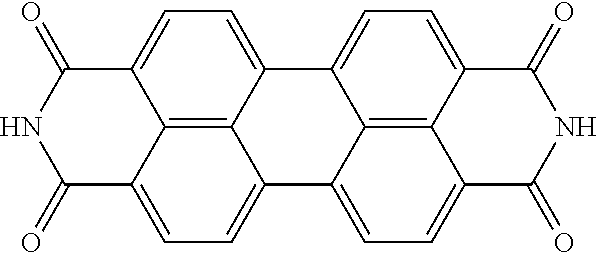
C00017

C00018

C00019

C00020

C00021

C00022

C00023

C00024

C00025

C00026
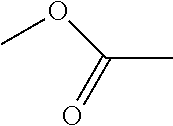
C00027

C00028
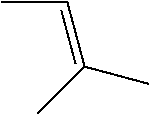
C00029

C00030

C00031

C00032
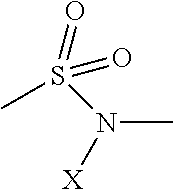
C00033
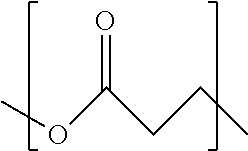
C00034

C00035
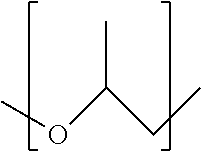
C00036

C00037

C00038
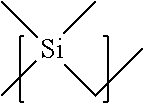
C00039
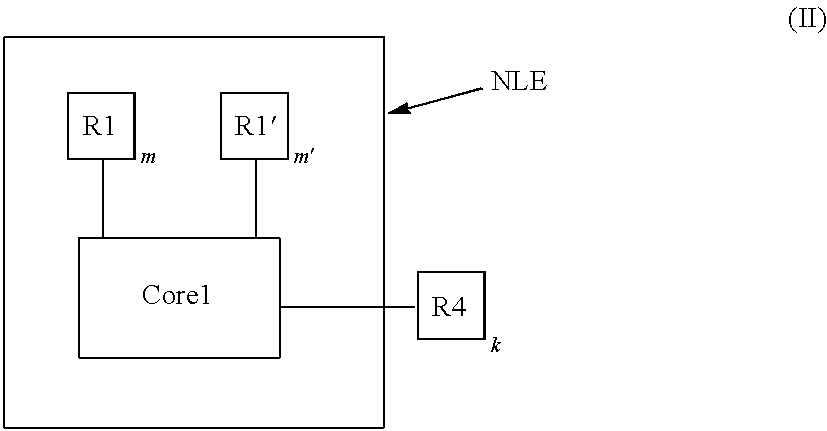
C00040

C00041
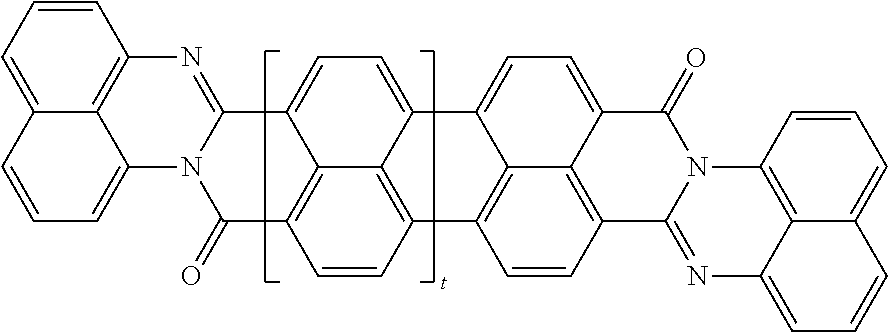
C00042

C00043

C00044

C00045
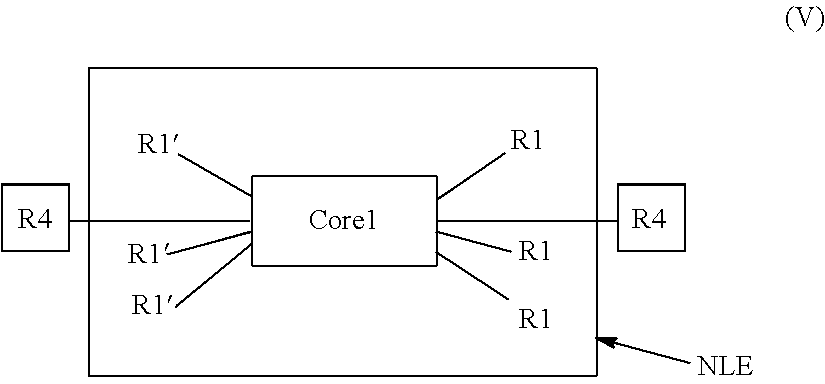
C00046

C00047

C00048

C00049

C00050

C00051

C00052
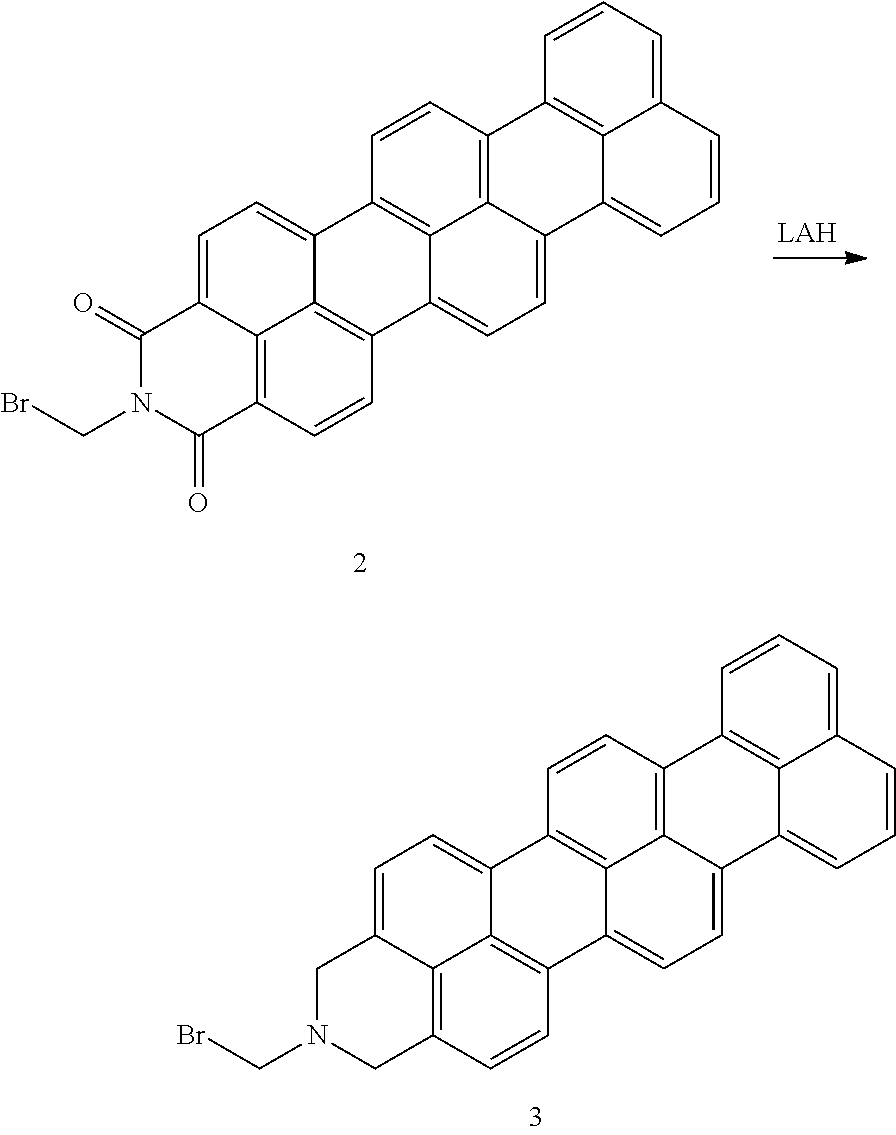
C00053

C00054
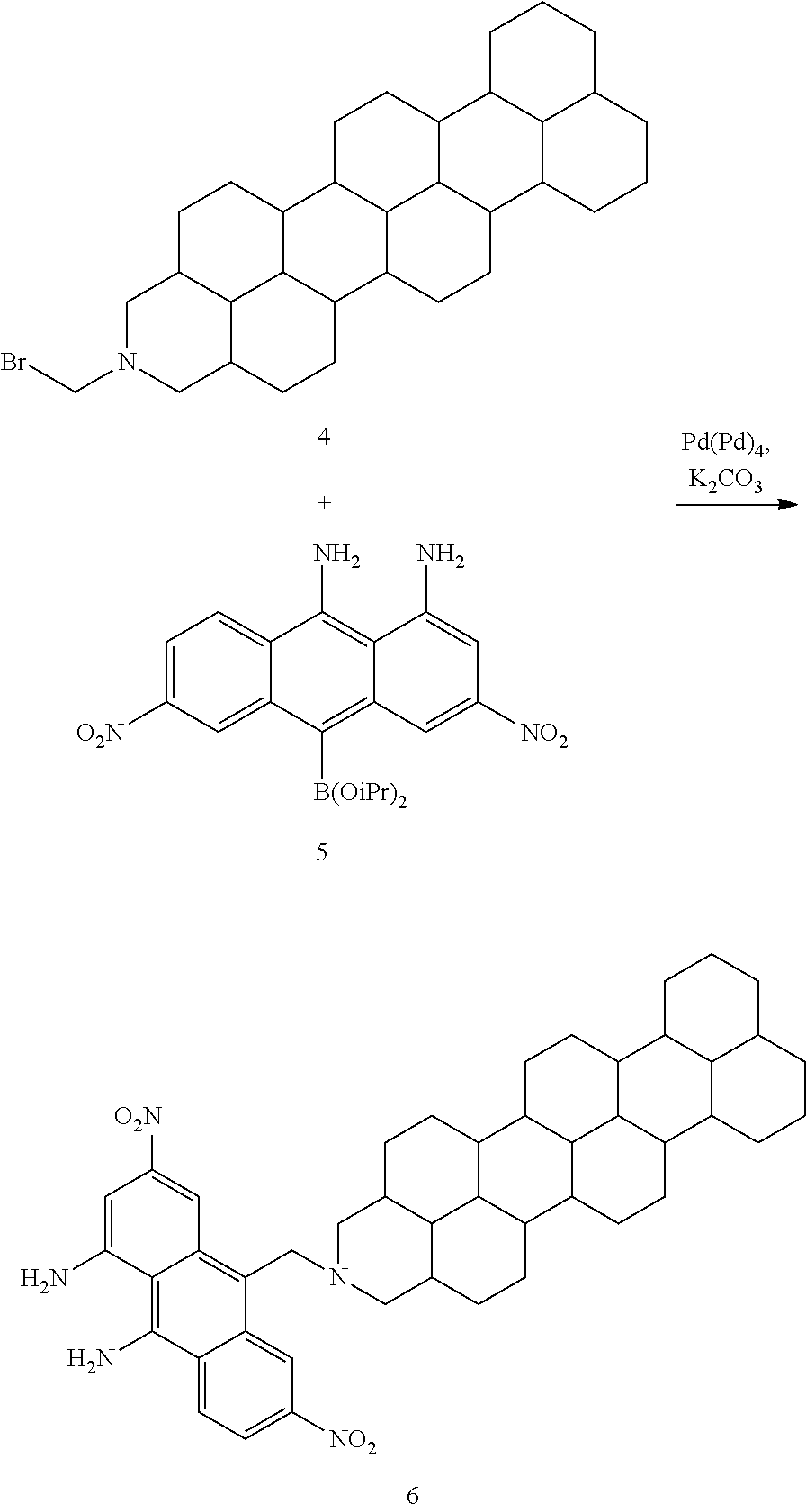
C00055

C00056

C00057

C00058
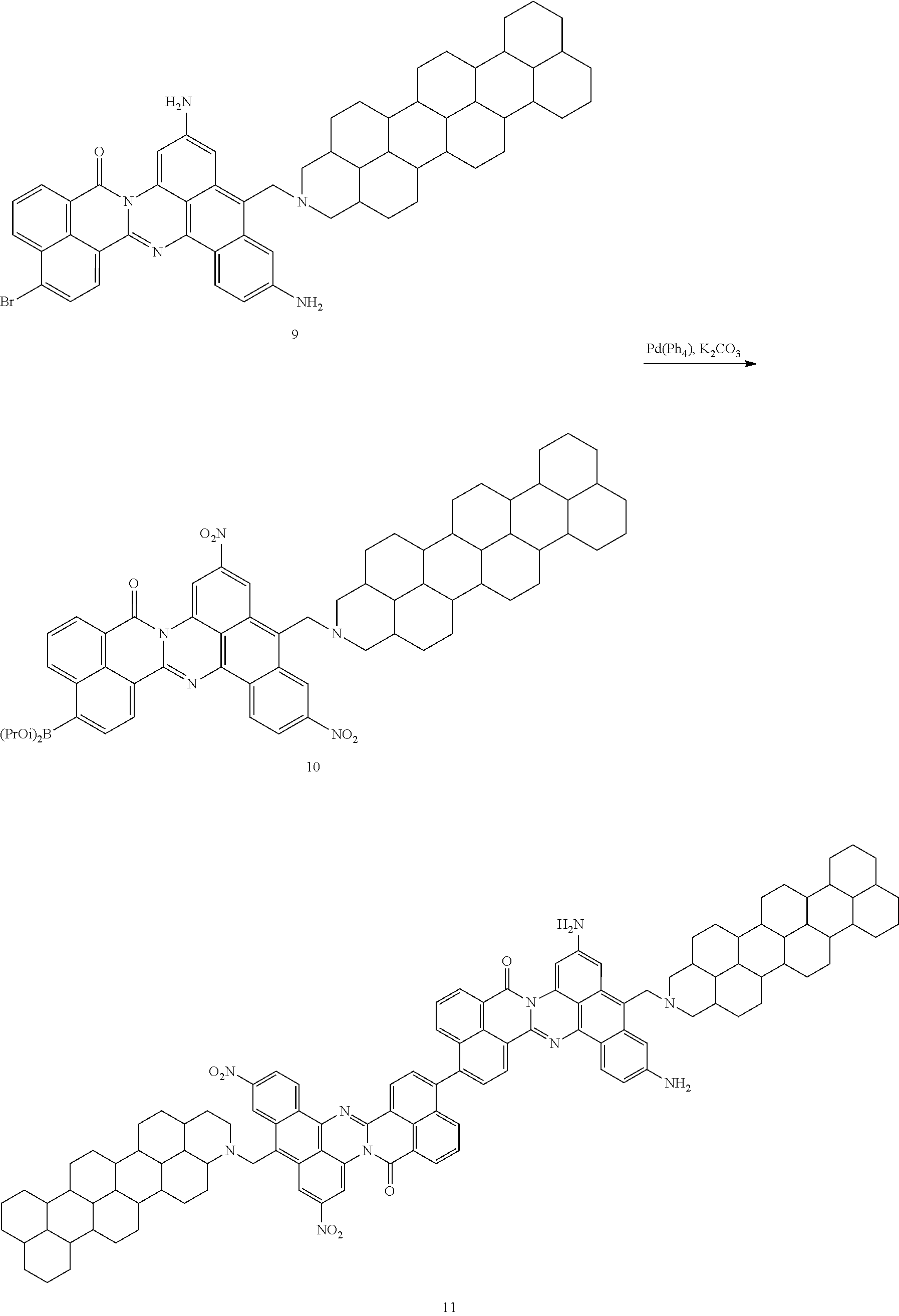
C00059

C00060

C00061

C00062

C00063

C00064

C00065

C00066

C00067

C00068
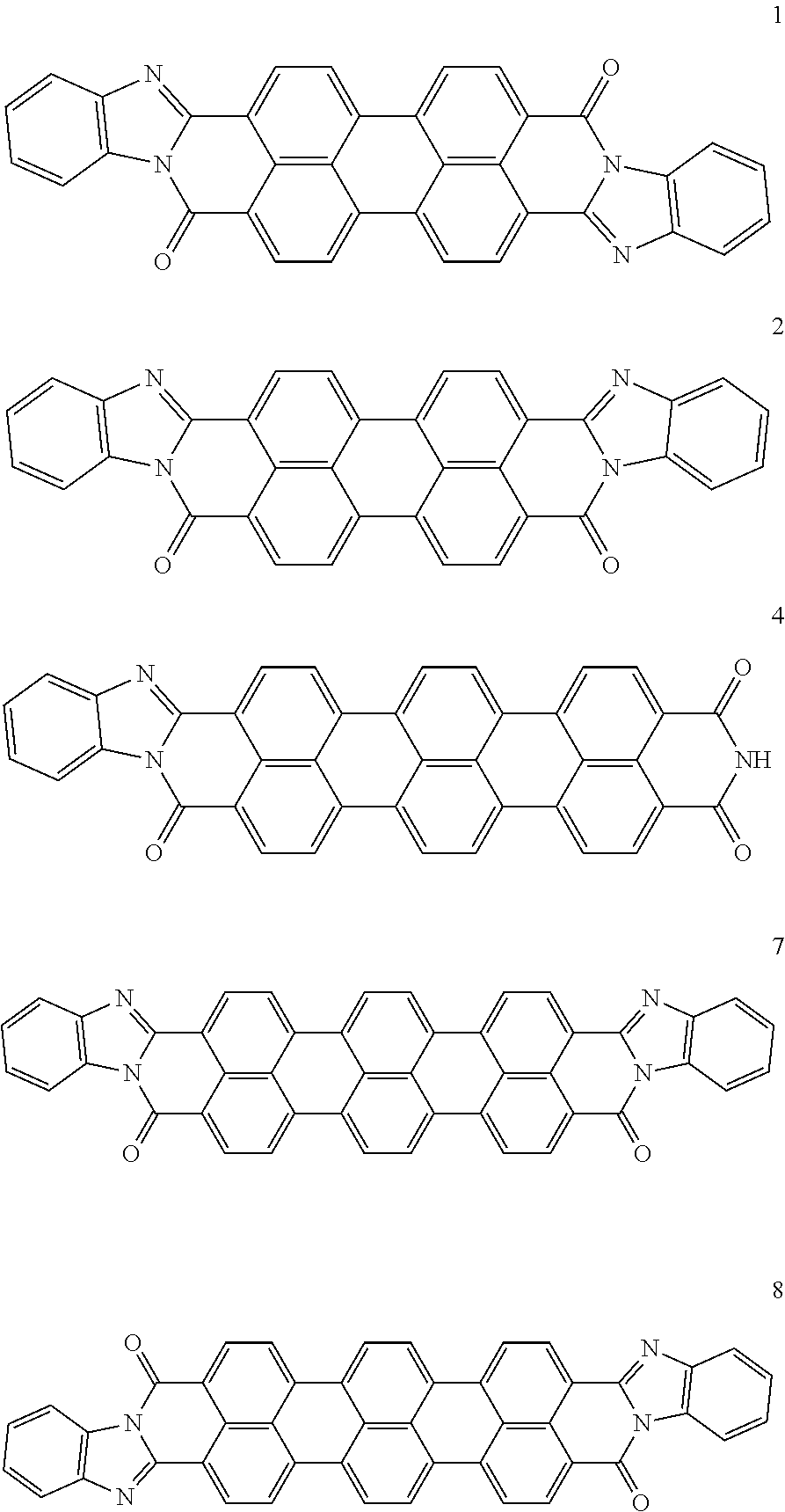
C00069

C00070

C00071

C00072
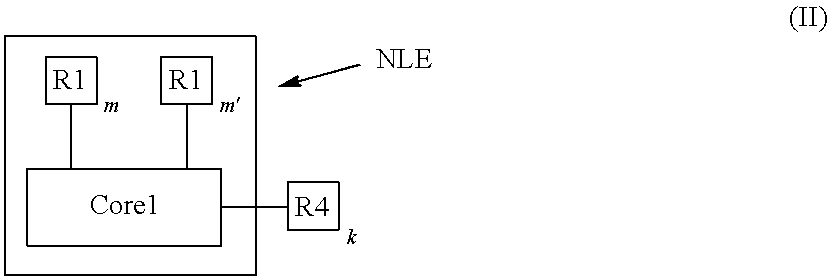
C00073

C00074

C00075

D00001
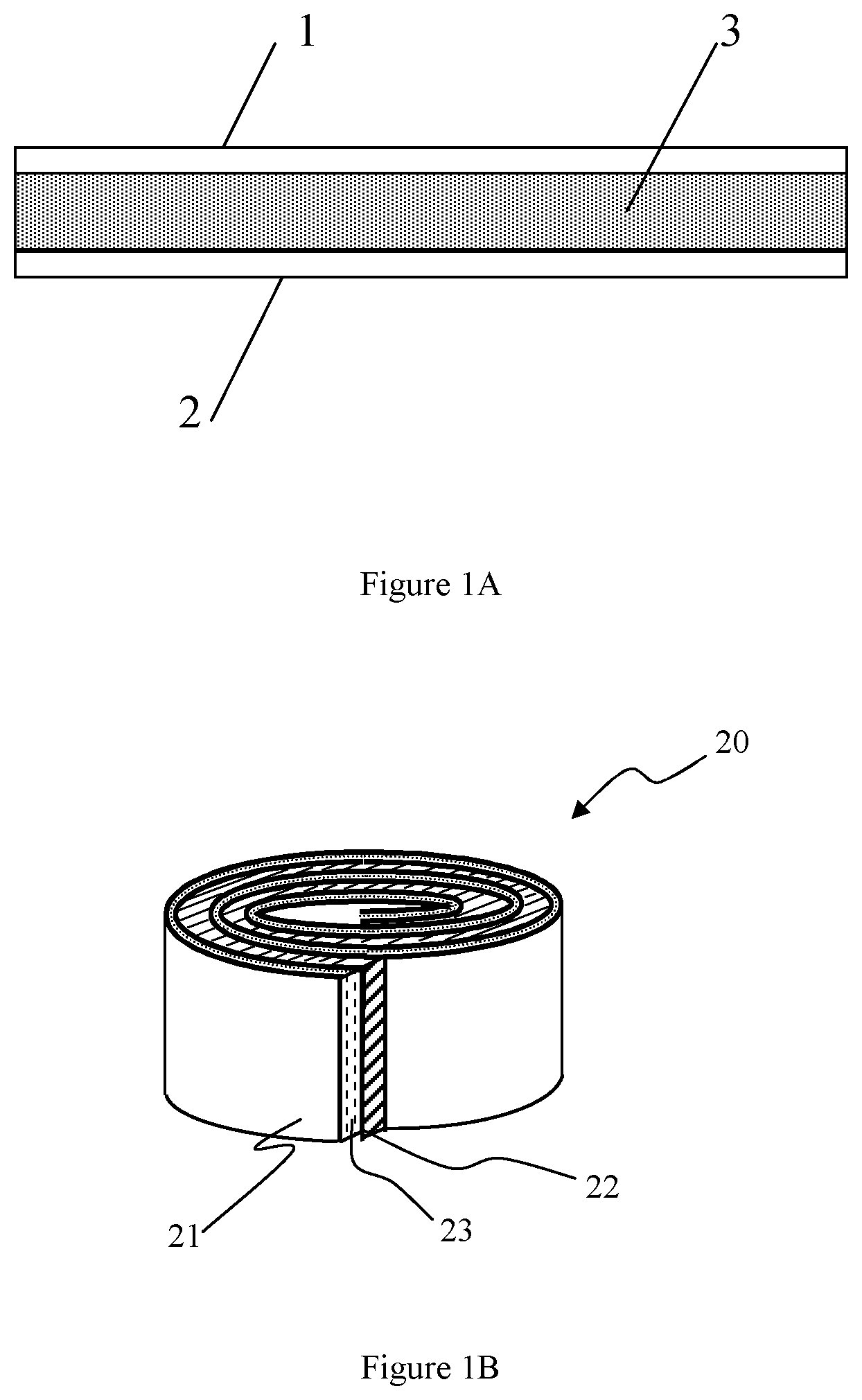
M00001

XML
uspto.report is an independent third-party trademark research tool that is not affiliated, endorsed, or sponsored by the United States Patent and Trademark Office (USPTO) or any other governmental organization. The information provided by uspto.report is based on publicly available data at the time of writing and is intended for informational purposes only.
While we strive to provide accurate and up-to-date information, we do not guarantee the accuracy, completeness, reliability, or suitability of the information displayed on this site. The use of this site is at your own risk. Any reliance you place on such information is therefore strictly at your own risk.
All official trademark data, including owner information, should be verified by visiting the official USPTO website at www.uspto.gov. This site is not intended to replace professional legal advice and should not be used as a substitute for consulting with a legal professional who is knowledgeable about trademark law.